modmuze
FEBRUARY 2024
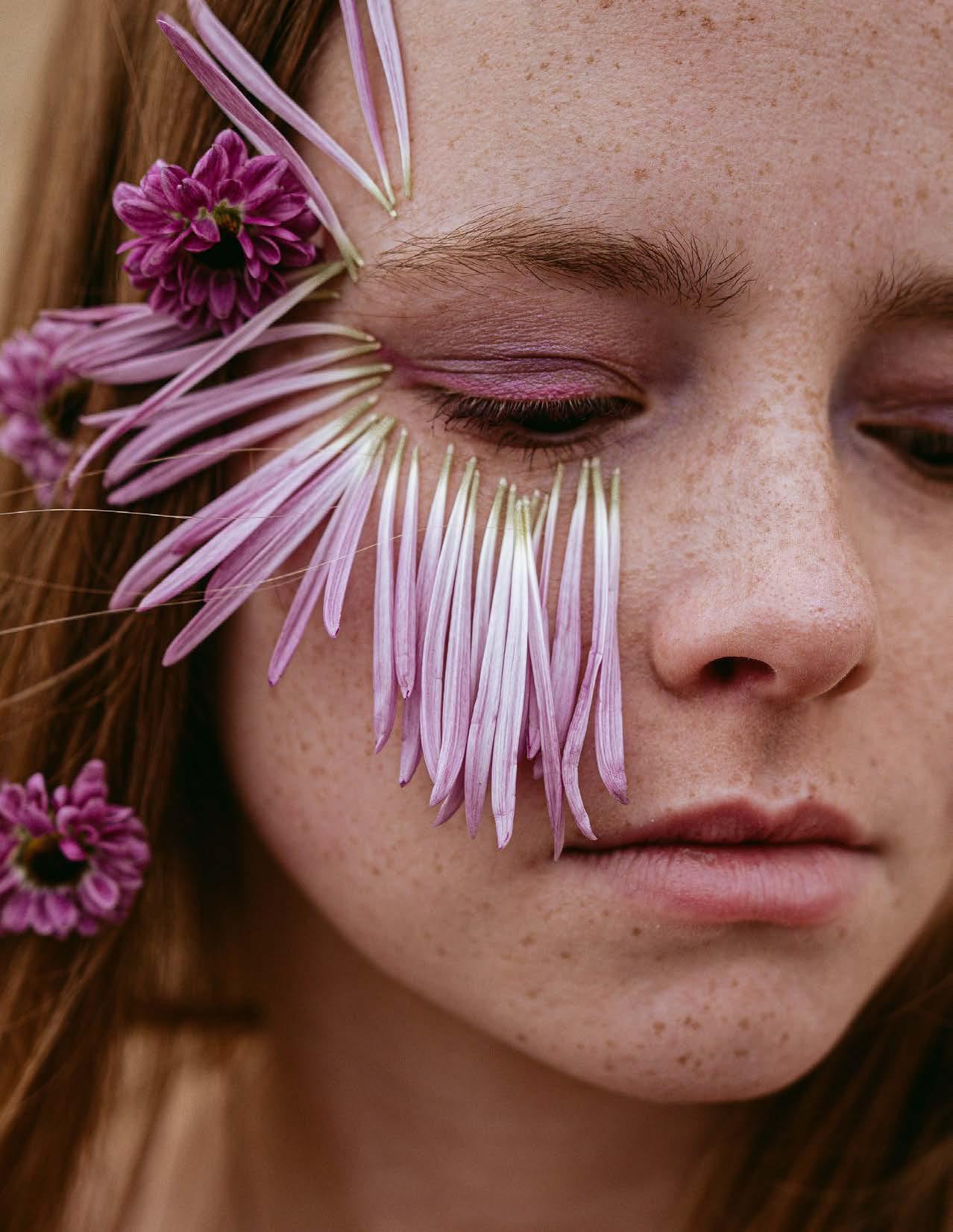
THE BIRTH OF STYLE
The difficult journey through trend influence and self discovery
I COULD DO THAT In Defense of Modern Art
THE ART OF THEATRE
Connecting the past to the present
6
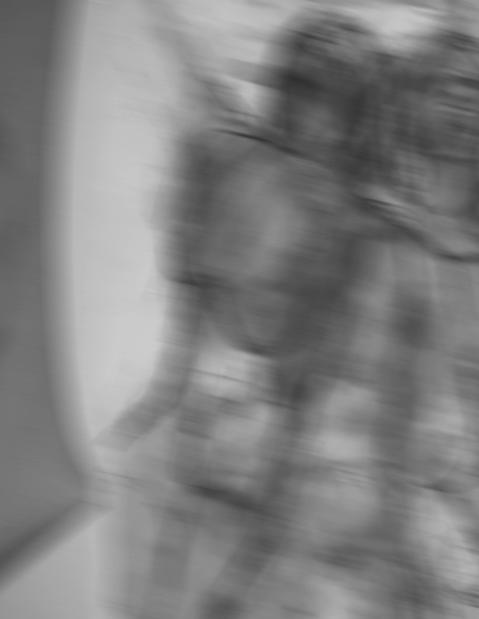
8 ROLE OF WOMEN IN ART
14 IMPACT OF ART IN FASHION
16 OPHELIA
20 THE POWER OF SYMOLISM THROUGH THE LENS OF GUSTAV KLIMT
26 THE BIRTH OF STYLE
30 WINGED VICTORY
36 THE ART OF THEATRE
OPUS ODYSSEY
40 A CONVERSATION WITH ART STUDENTS
50 ART IN ALL ITS FORMS
56 I COULD DO THAT
62 MAKING AN EMPRESS
66 PORTRAIT OF A MAN AFFLICTED
70 CENSORSHIP IN ART
ENTS CONT-

editors’s note
The modmuze team and I would love to invite you to read our next issue, “Opus Odyssey”, meaning “a journey through art”. For this issue, our team wanted to explore specific themes of art during the most prominent times in art history. From modern art, to renaissance, to sculptures, we wanted to hone in on what art means to us. Art is not just paint on a canvas, rather what went on behind the scenes to create such masterpieces. Art is so much more than just something you “think” you can recreate; it comes from real people with real emotions, creating something for us to think about and enjoy.
February 2024 is our most cohesive issue yet. We wanted to create an overall theme that is recognized throughout the entire magazine. We deep dived into some famous artwork and the stories they told, talked about the idea of censorship in some of our favorite pieces and got up close and personal with some of our own art students on campus. While flipping through, you will find photoshoots on grand staircases, magical gardens and even the Furniture Showcase on Main Street.
One of my favorite things I took from this issue was the idea that art can be everywhere. As I was watching these students work to create things they wanted to get out into the world, I was reminded that art was created for our benefit, and we should learn to enjoy it every moment we can. Modmuze is a work of art in itself and so is each and every person who walks through our doors.
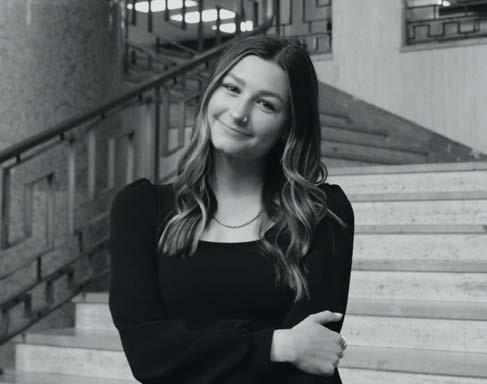
Art has the power of healing as well. After producing this issue, I decided to take the magazine’s advice and start using art to distract me from the hustle and bustle that is life as a college student. It is so easy to get wrapped up in everything that you have to do, that it’s hard to notice everything good around you. Look, I hear you; college is hard. But if we spend all of our time doing assignments and watching TikTok in bed, then we’re going to miss out on the truly beautiful things life has in store for us. But trust me, I’m still learning that one, too.
Thank you for supporting modmuze and all we believe in. As long as we have fashion and people who want to speak their minds, we will continue to strive to create. Modmuze is always working, and we can’t wait for you to see what we come up with next.
With love,
EDITOR-IN-CHIEF & President Emily McCaslin, MMJ
CREATIVE DIRECTOR & Vice President Leah Brainerd, DM
PRODUCTION DIRECTOR Hadley Waldren, ENG
MARKETING DIRECTOR Hannah Schob, DM
PHOTOGRAPHY DIRECTOR Loren Rogers, Fashion Merchandising
STYLING & MODEL DIRECTOR Sebastian Arias, DM
TREASURER P atricia Dimick, DM
WRITERS Cooper Carr*
Jaycee Hampton
Jillian Eckert
Kamryn Chapman
Kennedy Skaggs
Raynee Howell
Brooklyn Taylor-Talbert
Shealynn Hoffman
Ruby Van De Steeg
PRODUCTION
Sophia Rodriguez
Bailey Wrightsman
Ruby Van De Steeg
MARKETING Laiza Hernandez Kaylee Pike
PHOTOGRAPHY Hannah Cozens
Toni Purnell
Rodney Ashaba
STYLISTS
Catie Barrett
Jordan Reimer
Maggie Levy
Abigail Burnham
Riley Kirkman
Meredith Mountford
Audrey Flood
Ruby Van De Steeg
Sarah Evan Mitchell
Rodney Ashaba
Johanna Gonzalez
CREATIVE ADVISOR
Kelly Kerr
Multimedia Producer
106 Nancy Randolph Davis
918-691-1813
kelly.kerr@okstate.edu
FACULTY ADVISOR
Cristina González Associate Professor
Art History
108 Bartlett Center (405) 744-6016
cristina.gonzalez@okstate.edu
modmuze is a fashion and lifestyle magazine produced by students, for students. Our magazine provides a unique platform for students to freely express themselves creatively in any and all ways imaginable. our mantra empowering self-expression

*Copy Editor


modmuzemag@okstate.edu


modmuzemag.com @modmuzemag @modmuzemag
modmuze
editorial team
With

OPUS ODYSSEY
by Seabastian Arias
Photos, styling, and layout by: Sebastian Arias
help from Autumn Mccart, Allison Wade, Kristen Lynn, & Briley Williams

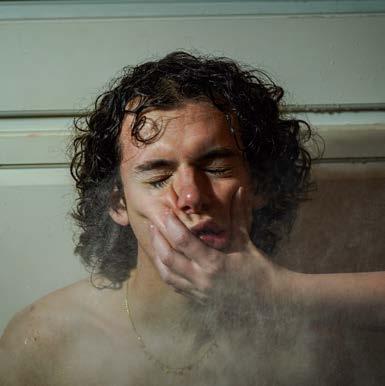


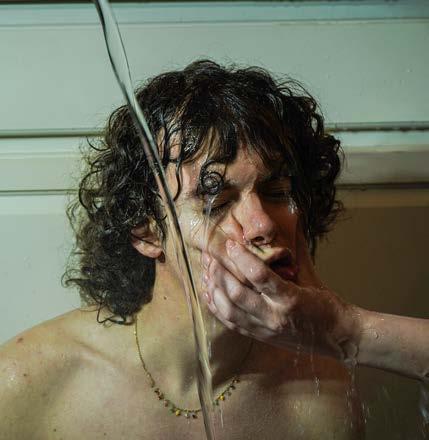


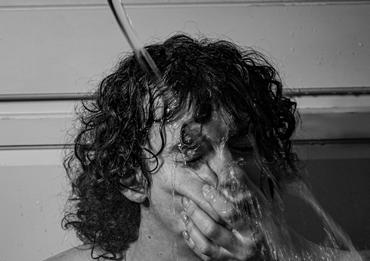

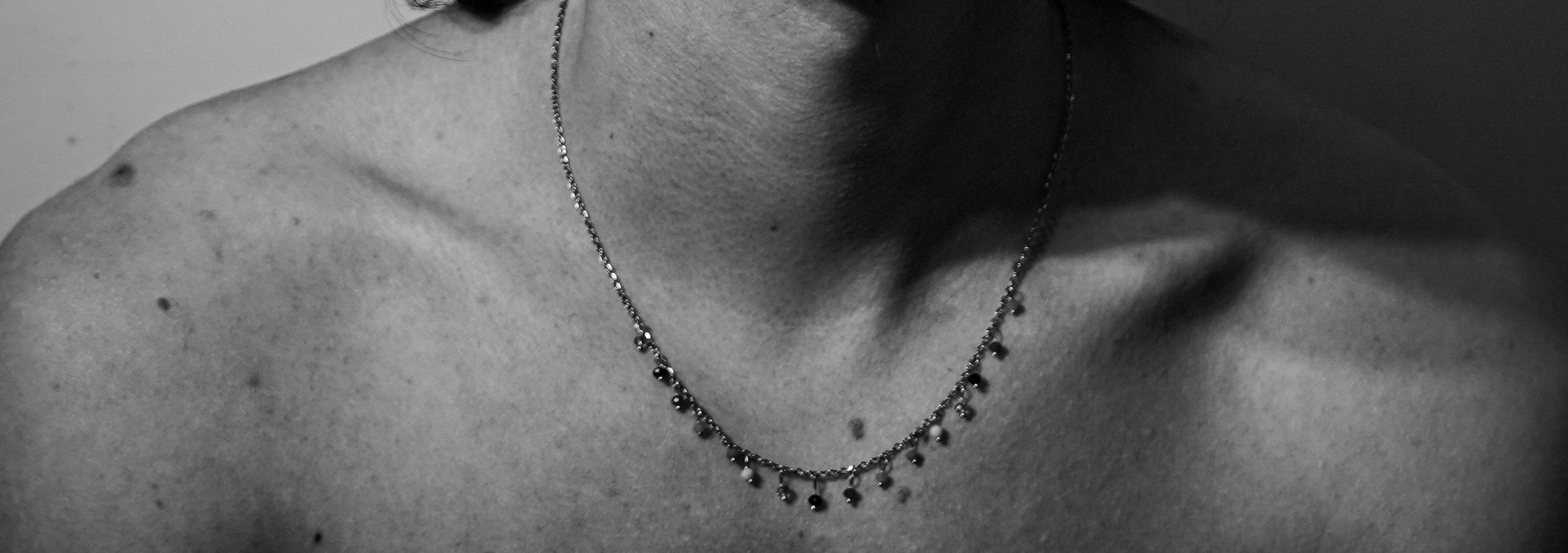


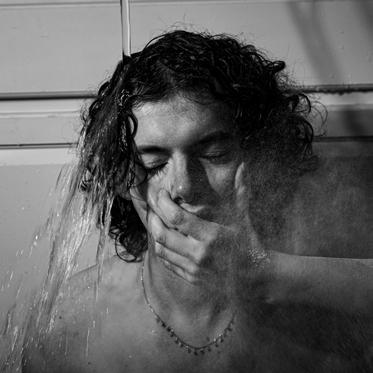
What is Opus Odyssey? The first thing that comes to mind is a mixture of Homer’s Odyssey (that you probably read in high school) and the latin word Magnum Opus. The word Opus on its own means any artistic work, especially one on a large scale. The word Odyssey means a long and eventful journey or adventurous journey or experience. Together they tell the story of the experience and journey one takes when creating something, not necessarily to the scale of a traditional magnum opus. The process of creation is one that always ends up being a journey of sorts, whether it be a painting, poem, song, or any form of art you choose. Art surrounds us everyday in its different forms, whether we are keen to it or not. In this issue, we primarily look at it through the lens of classical art history, however it’s important to deviate from just thinking of art through an academic art history lens, as art is ultimately human creativity, and expression in the form of creation. Many consider themselves not to be creative, yet create something every day. Art is expression, and expression is response to life, so whether aware of it or not we all undergo our own Opus Odysseys at some point. Art in itself is so expansive that we couldn’t possibly give an ode to all the greats that deserve recognition , (that would probably need its own dedicated magazine) but we all underwent a journey of experiences promoted by personal inspirations throughout the creation of this issue, which is what Opus Odyssey is all about.

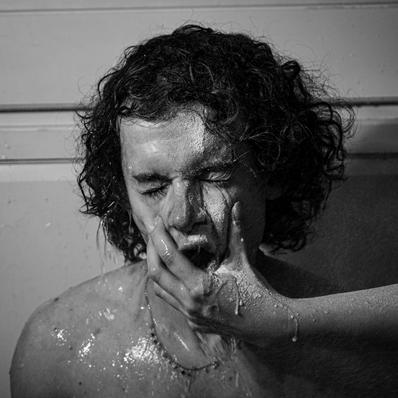



FEB modmuze 7
ROLE OF WOMEN IN ART

8 modmuze FEB
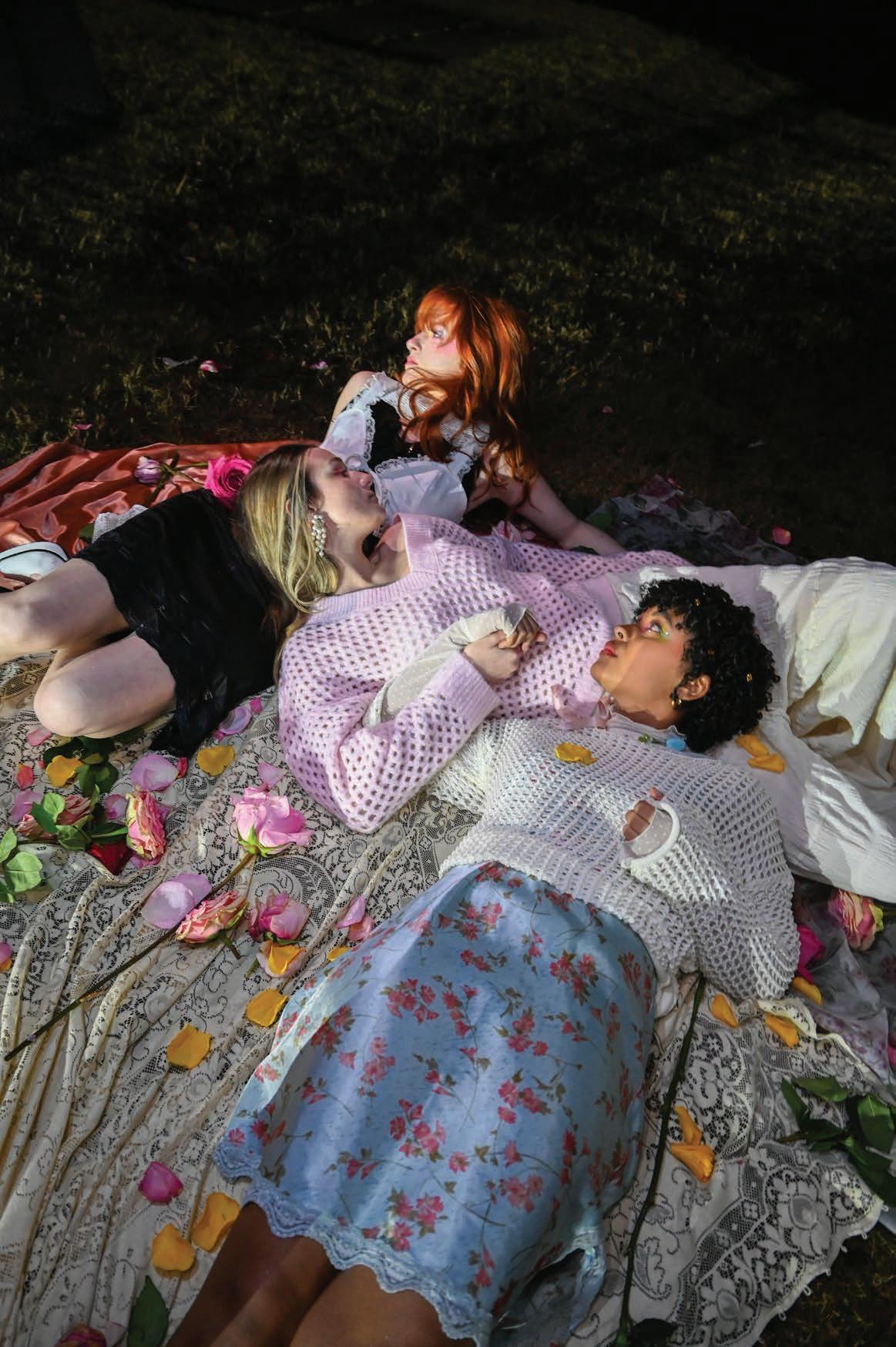
ROLE OF WOMEN IN ART
by Shealynn Hoffman
FEB modmuze 9
Have you ever wondered why there seems to be so few women artists?
Not in the case of modern art but historically. There are thousands of paintings and sculptures of women, and yet there seems to be no major paintings or sculptures made by women. I really only started thinking about this lack of historical women’s art when I started getting into art. Despite the societal norm that girls and young women are more emotional and creative, the recognition of women in art, or lack of it, does not reflect this idea.
When I started eighth grade, I was given two elective slots for the year, I decided on art and robotics. At the time, I was really interested in computer science and gaming, but many of my friends were in art. The gender balance of these two elective rooms was very different. I was one of two girls in my Robotics class, while there was only one table of boys in my art class. For a long time, there has been a push for more girls in STEM and I was willing to comply. In fact, I got an A in my robotics class and a B in my art class. I did eventually get more interested in art, but it struck me as odd how most of the room was female, but we would only discuss these historical art pieces made by men, and how every historical art movement seemed to be led by men.
10 modmuze FEB
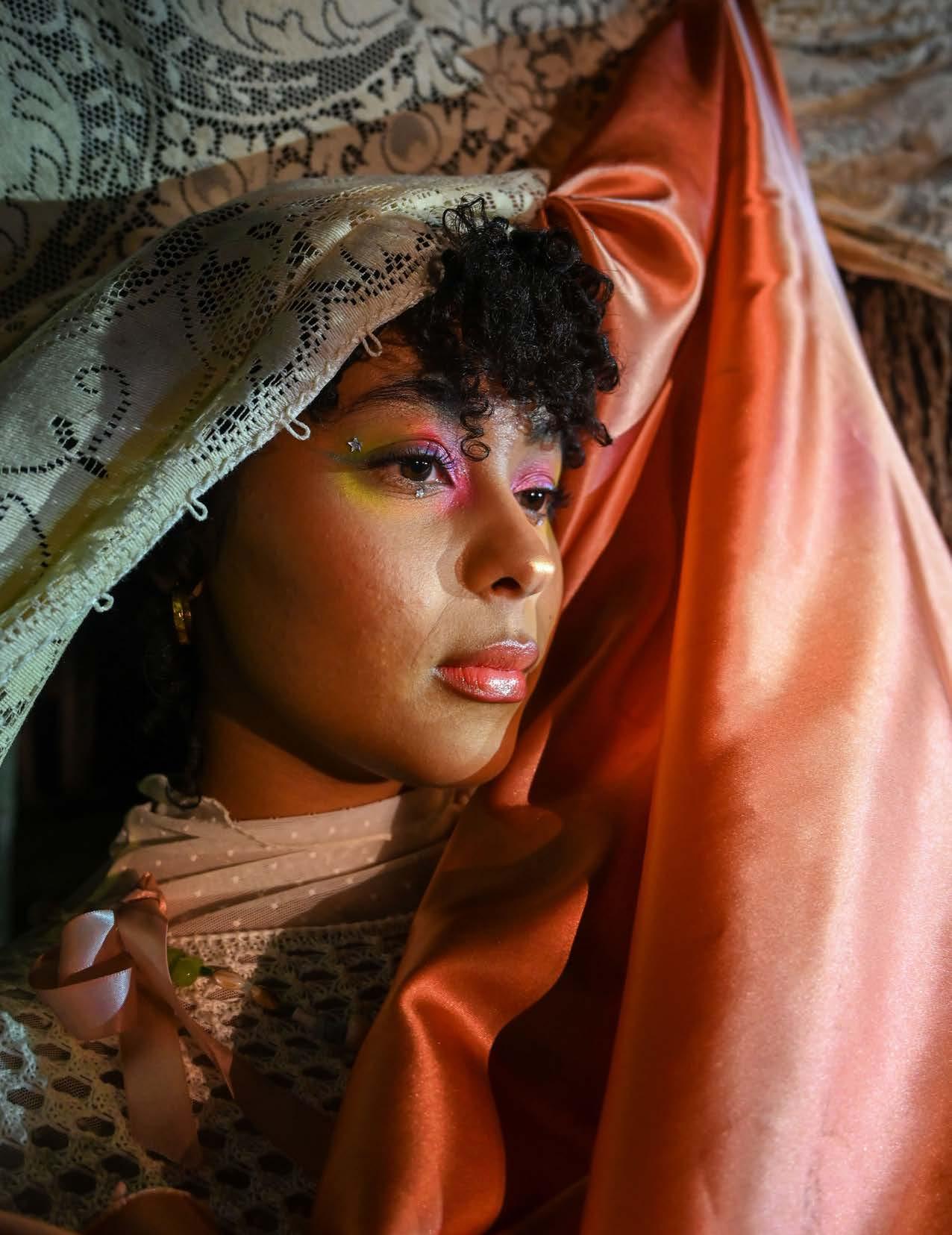 Photos by: Loren Rogers
Styling by: Riley Kirkman, asst. Abigail Burnham
Layout by: Bailey Wrightsman
Photos by: Loren Rogers
Styling by: Riley Kirkman, asst. Abigail Burnham
Layout by: Bailey Wrightsman
FEB modmuze 11
Models: Sammy Williams, Meg Clowers, Teagan McKinney
How long is it going to take before more women get added to the art history books?
What is it going to take?


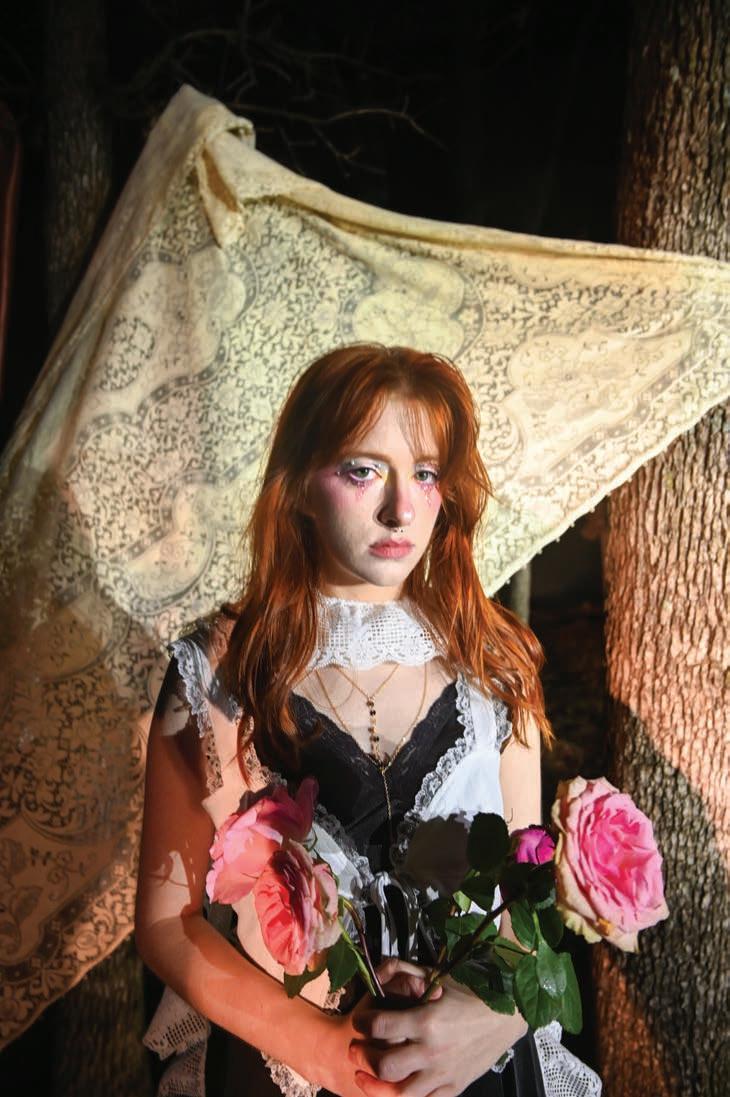
12 modmuze FEB

When I started high school, I was told that art was a required elective. I enjoyed my high school art class way more than my middle school one, so I spent two years in art. Sadly, I fell into a depression in high school, one that took me a very long time to crawl out of. During this time, I remember how I would draw myself. My self-portraits never lacked a flaw, they had patchy skin, stretch-marks, fat-rolls, body hair, and any other flaw I felt I had at that time. I wondered if that was what made these portraits of women drawn by men so appealing, rarely were these women ‘flawed’, and if they were, it was enough to be looked over.
Many women who create art in any form, whether it’s painting, sculpting, writing, or music, tend to write about the experience of being a woman. Many women also tend to write about their experiences with religion and race and being treated like outsiders because of how difficult it is. According to the New York Times, between 2008 and 2018 only 11% of art obtained by the major art museums of America was by women. How long is it going to take before more women get added to the art history books? What is it going to take?
FEB modmuze 13
Impact of Art in Fashion
by Brooklyn Taylor-Talbert

Photos by:Hannah Cozens
Styled by:Maggie Levy, asst.Audrey Flood
Layout by: Hadley Waldren
Models: AnnaClaire Arterbury, Campbell Fairbanks
14 modmuze FEB
Art is a very special thing. It allows you to have creative expression while telling a story. It also allows you to dig deep within as the viewer. What is the impact of art in fashion? I would say the impact art has on fashion is that it expands on what we know as creative expression and it expands upon what we call art. Although art and fashion are different forms of expression, I think of them as the same in a way. I think the runway is where art and fashion are most intertwined. Runways are a way for fashion designers to show off their creations, such as a painter would do

with an exhibition. In her 2019-20 winter show, Guo Pei showcased her creative expression in the best way possible. I was floored when I saw her designs. Looking at the dresses made it feel like she took her brain out and put it on display so we could all see her vision. When you saw her dresses, it made you feel like she was trying to tell a story in the most beautiful way possible. Due to her gorgeous visions, she even had her designs displayed in the Legion Of Honor Museum next to other iconic forms of visual art.
FEB modmuze 15
layout by: Hadley Waldren

“Do not, as some ungracious pastors do, Show me the steep and thorny way to heaven; Whiles, like a puffed and reckless libertine, Himself the primrose path of dalliance treads, And recks not his own rede.”
William ShakespeareHamlet: Act I Scene 3



16 modmuze FEB

OPHELIA
by Raynee Howell

FEB modmuze 17

Moments before she was born into the world, she remained draped in a veil of innocence. As she felt a force pulling her away from the only place she had ever known, strangers stared back at her, and the veil began to lift.
Polonius, the father, and Laertes, the brother, stood among those strangers who forced her out of the womb. Into a world where she would soon be subject to the power of man. Ophelia, they called her. A Greek word meaning help, aid, advantage or benefit.
From the moment Ophelia could crawl, she knew her role. For any man who entered her life, she would become the person he needed her to be. Not only were her thoughts and behaviors not her own, but neither was her body.
The men in her life, both father and brother, gave her two options: to please many men or to marry a man for the purpose of reproduction.
Ophelia’s sexuality became the most important aspect of her identity.
Laertes warned her about the dishonor she would bring to the family if she misused her only asset.
Ophelia eventually found a love interest, the prince in the kingdom, Ham -
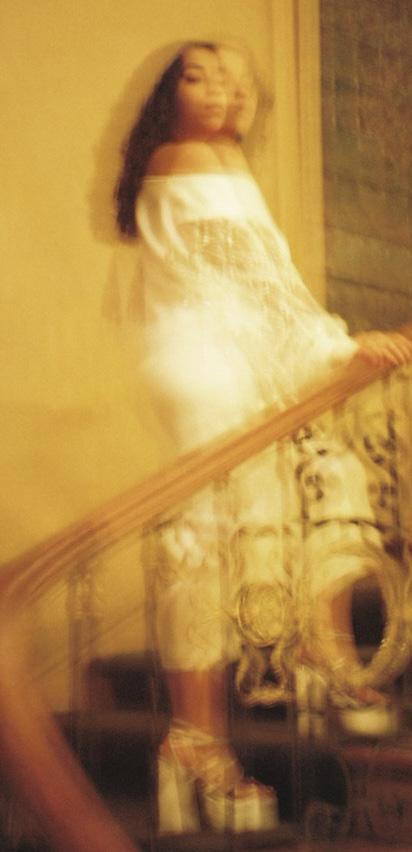
let. Both Polonius and Laertes warned her against becoming involved with him. Ophelia listened. She continued to see Hamlet, but she reported every interaction with him back to her father. Hamlet, to know fault of Ophelia’s, began to go mad. He hallucinated and exhibited irrational behaviors, even some directed at Ophelia herself. Knowing nothing other than to stand by the men in her life, Ophelia hoped her love would be enough to help him. Her love could not slow his decline into madness.
Ophelia’s father, Polonius, had a plan to determine the cause of Hamlet’s behavior. He hid behind a curtain to observe Hamlet’s interactions with his mother, Gertrude. As the interaction became heated, Polonius revealed his hiding place by echoing the mother’s cries for help. Hamlet, without a second to spare, stabbed through the curtain killing Polonius. His lover’s father was dead. Ophelia could not handle the world without her father. He was the man who taught her how to act. How to be obedient. How to have worth as a woman. How could she live without his direction?
The only person Ophelia could turn to was Laertes. She expected his loyalty to lie with her. She soon realized; she was not his priority. Avenging their father was.
18 modmuze FEB
Photos by: Rodney Ashaba

Laertes killed Hamlet, but not before the very blade Laertes used to harm Hamlet was turned in battle to wound him.
Ophelia is left with no one. No man to command her to act. No man to tell her the next move. She wanders aimlessly into a meadow of flowers. She begins to mumble to herself. The words leap out of her mouth without ever gracing her brain. She runs her fingers through the tall grasses and stops to stare at the vibrant flowers. She reaches for the first flower that catches her eye. Ophelia’s hand flows through the air without colliding with the bright white flower. Confusion is painted across her face as she frantically reaches for the flowers surrounding the white flower. The other flowers collide with her hand, and she gathers as many as her frail arms can carry. Ophelia reaches a small creekbank. She had no more room to gather flowers but one caught her eye. She dropped the bouquet of flowers that were clutched in her grasp moments prior.
ELIA OPHELIA
She grabbed a fistful of the green leafed flower and leaned back into the water. The bright white flower Ophelia wished to hold more than all the others in the meadow was a daisy. The daisy represented innocence. There was no innocence in her world. The flower dissipated as she reached for it. The last hope she had vanished long before she laid eyes on the flower. The green leafed flower Ophelia took with her into the water was a rue. The rue flower represented regret and sorrow. The rue flowers were also used to induce abortions in ancient times. The flowers not only absorbed her grief, but also her resentment for the one purpose she was given as a woman. To be a sexual being, for the creation of a child or the pleasure of a man. Ophelia finally understood as she held the rue flowers to her chest what she regretted more than anything. Watching the men in her life ruin each other and in turn, ruin her.
Styling by: Rodney Ashaba, asst. Johanna Gonzalez
OPHELIA OPH-
Layout by: Sophia Rodriguez Models: Johanna Gonzalez
FEB modmuze 19
The Power Of Symbolism

20 modmuze FEB

Through The Lens Of Gustav Klimt
by Sebastian Arias
Symbolism
FEB modmuze 21

Gustav Klimt was a successful and controversial artist at the end of the 19th century leading into the 20th. He is known as one of the first modernist painters and created a signature style for himself later in life with the use of gold leaf in his paintings. Klimt is best known for his painting “The Kiss,” a seemingly romantic piece that is symbolic of love to many. To others, however, the work hints at the tale of Apollo and Daphne, where Apollo forces his love onto Daphne, who constantly rejects his advances. The tale ends with Daphne pleading to her father, Peneus, to save her from Apollo and his unwanted advances, which Peneus does by transforming Daphne into a laurel tree.
In “The Kiss,” it can be interpreted that the female figure isn’t accepting the kiss and is actually turning away, with evidence being that the scene of the painting is a cliff, giving the damsel nowhere to go . It can also be argued that the roots that entangle her legs allude to Daphne’s transformation into a lau rel tree. It seems possible then that “The Kiss” isn’t quite the romantic tale many make it out to be.
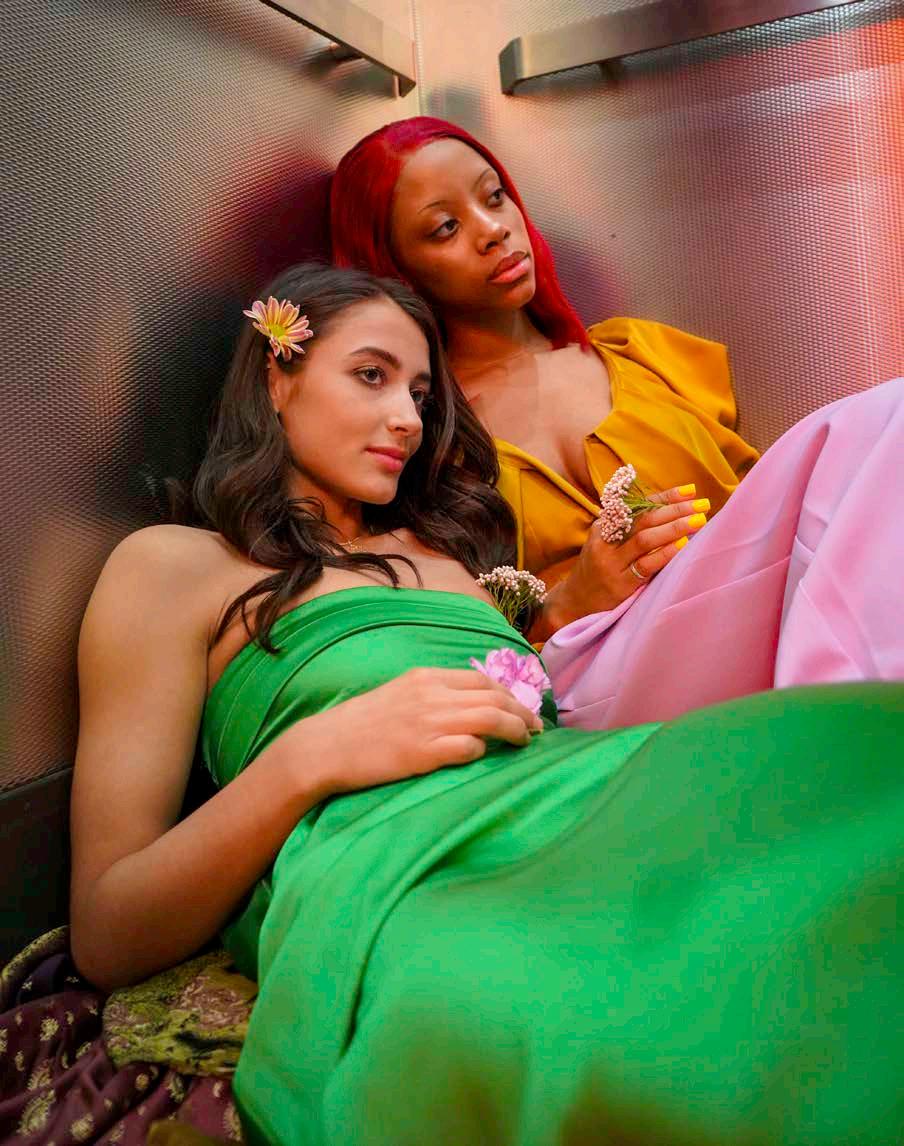



22 modmuze FEB
Klimt belonged to the symbolism movement just as much as he did the modernist movement. A delve through his catalog shows how he littered his works with allegorical meaning, most obviously on display in his commissioned works for the University in Vienna (1894) that were titled “Philosophy,” “Medicine” and “Jurisprudence.” All three works were denied by the University for their radical symbolism (that wasn’t idealized like the university would have wished) and “overt sexuality,” which provoked many to claim that the works were pornographic. A modern look at these paintings would make the pornographic claim bizarre when put into comparison with today’s content of the social media age, however in the context of 19th century Vienna, nudity was very taboo, so naturally paintings containing feminine nudity were destined to be scrutinized and sensualized. Yet despite the paintings having an erotic element, they also contained nude figures of shiverling elders and heavily pregnant women, which aren’t exactly sexy to say the least. The paintings are dark in their descriptions of each subject (another reason for why they were rejected) and have a rather cynical view of life: that is, life doesn’t stop or care for anybody. In “Medicine,” life is inevitable in the same sense that death is, medicine only slows what is already coming. In “Philosophy,” the pursuit of knowledge is a road to madness with no end or truly verifiable answers, if not only theories and ideas. In “Jurisprudence,” the truth is inevitable and law is inescapable (but wait, aren’t morality and circumstances things to be considered when judged by law?) At the top of “Jurisprudence,” there is a book titled “Lex” that references the Latin saying, “Dura lex sed lex.” This translates to, “the law is harsh but it is the law.” The series ended up being purchased by private collectors, but unfortunately was destroyed during World War 2, with only black and white photos of the paintings being left behind.



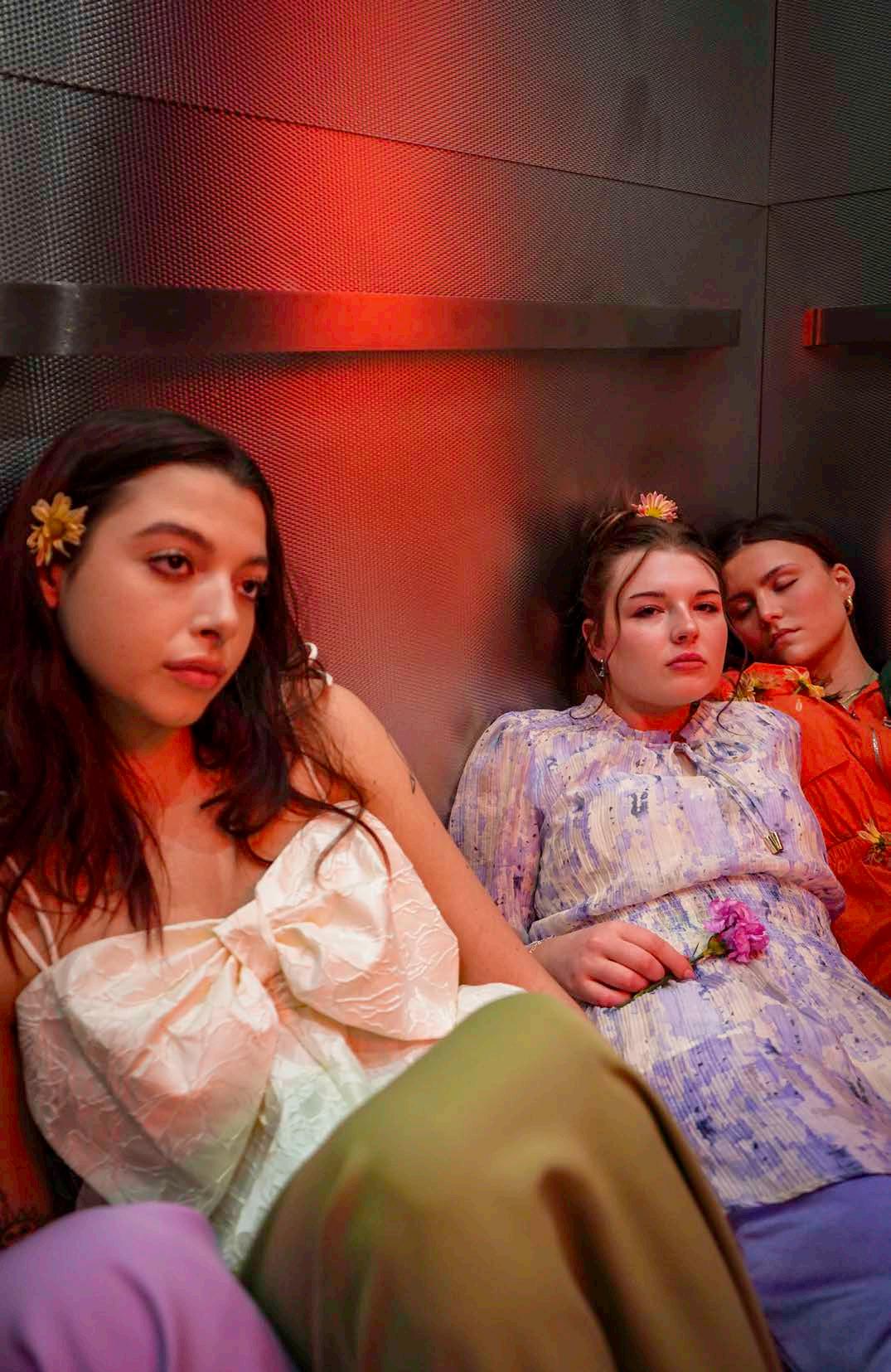
FEB modmuze 23

One of Klimt’s final works before his passing was “The Maiden.” The painting isn’t as widely recognized as the ones previously mentioned, but still encompasses the deep symbolism that possessed his work. Immediately, flowers and spirals can be seen throughout the image. The flowers can be taken as symbolic of the maiden’s evolution into womanhood, while the spirals can be seen to represent regeneration, love and fertility in a cyclical shape. There are 6 women who surround the maiden, all of them possibly signifying a stage of womanhood. The women seem to have their eyes in different states, some with their eyes shut, some in the midst of opening their eyes, the final figure at the top having opened her eye(s?) to look at the viewer. This can be seen as the awaken -
Styling by: Sebastian Arias, asst. Riley Kirkman, asst.Taylor Green
Models: Mikayla Curlee, Lily Martin, Galavonni Wilson, Riley Mills, Mariah Washington, Ruby Van De Steeg
Garments provided by J. Cole & Wooden Nickle
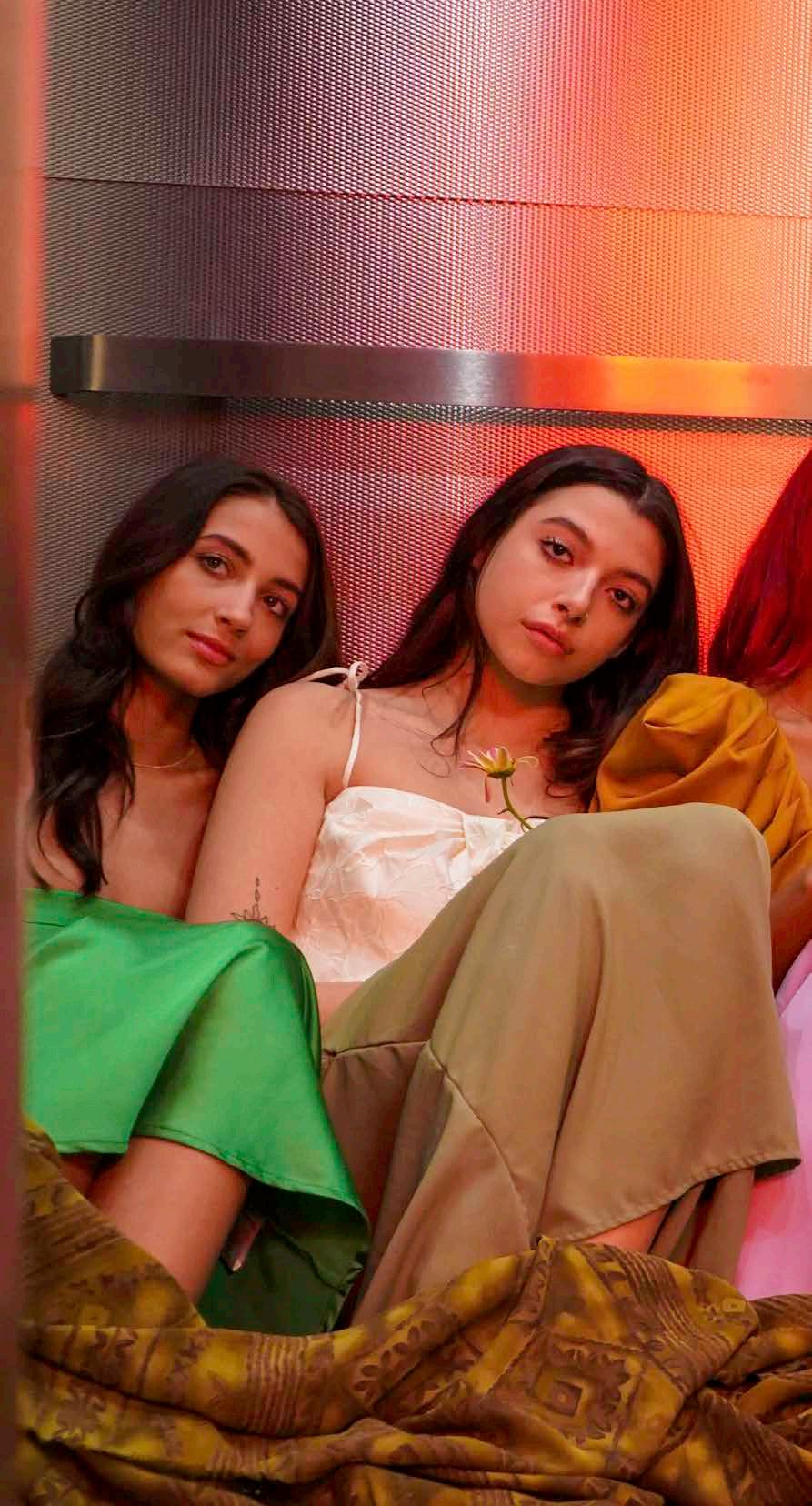 Photos and layout by: Sebastian Arias
Photos and layout by: Sebastian Arias
24 modmuze FEB
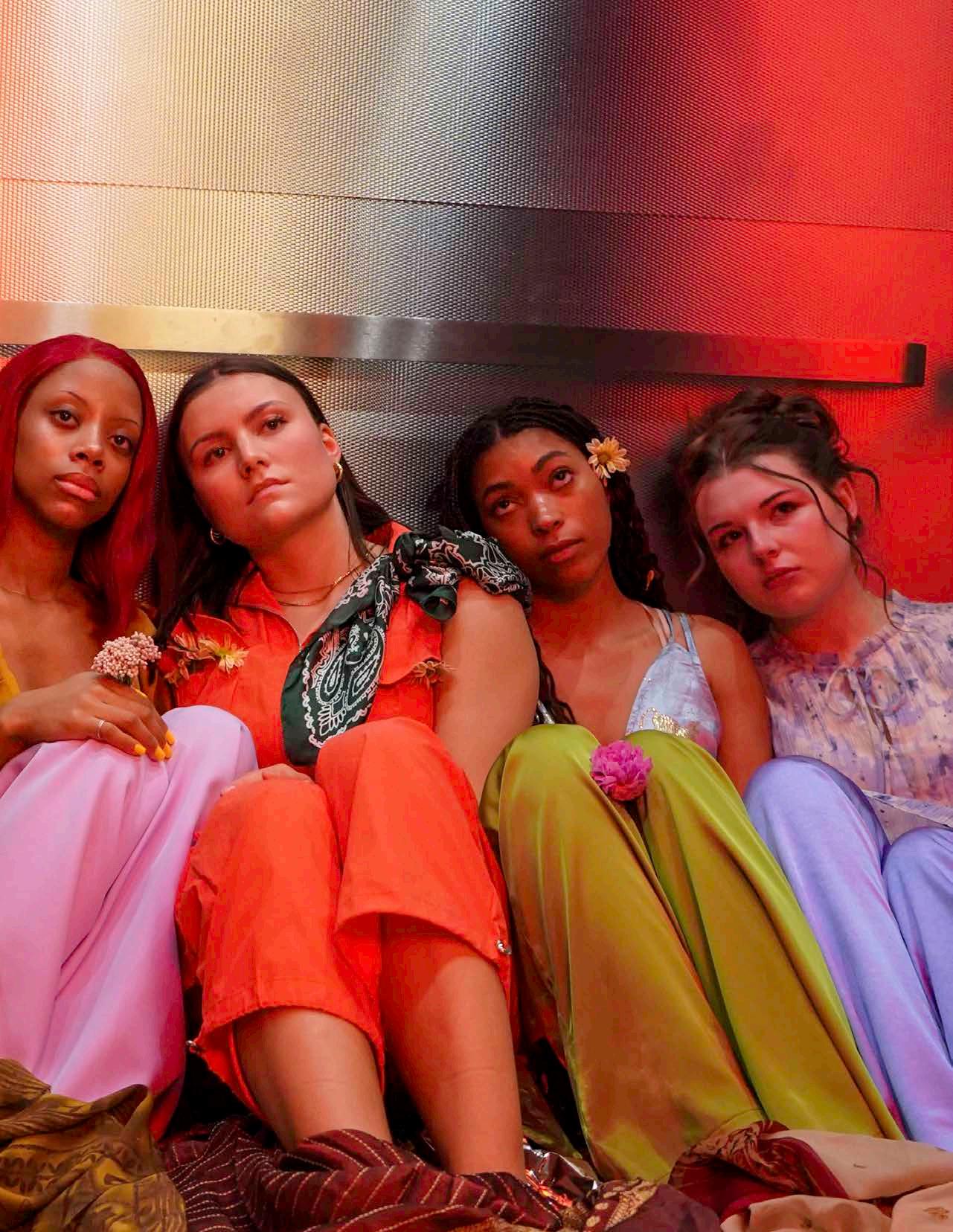
ing that one undergoes throughout traversing the various stages of womanhood. The thing with symbolism is that there’s no right answer. Some reduce “The Maiden” to a piece where the maiden is having a fantasy while she’s asleep, which isn’t nearly as empowering or deep. But maybe they’re right and I’m overanalyzing. I think one of the points is that it’s intentionally thought provoking. In art & creativity, answers shouldn’t be outright given, but merely hinted to instead. But really what do I know? I’m a guy writing about womanhood, from a 110 year old painting, from a male artist who doesn’t know anything about womanhood either.
FEB modmuze 25
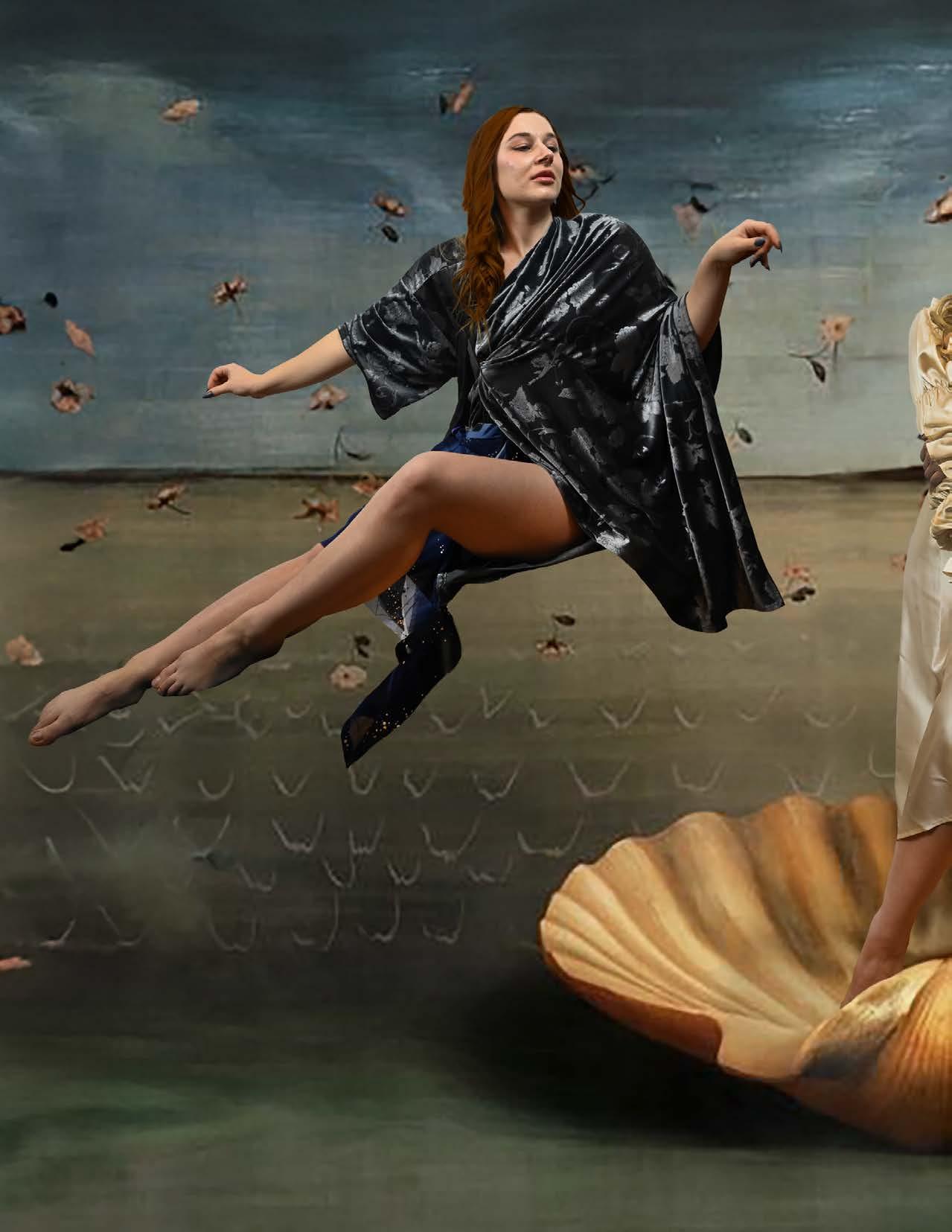
The Style of Birth
by Ruby Van De Steeg
The difficult journey through trend influence and self discovery.
26 modmuze FEB

Layout
Model: Dalia Lehmann
Photos by: Loren Rodgers
Styled by: Ruby Van De Steeg, asst. Catie Barrett
by: Ruby Van De Steeg
FEB modmuze 27
Before it’s even here, it’s already gone.
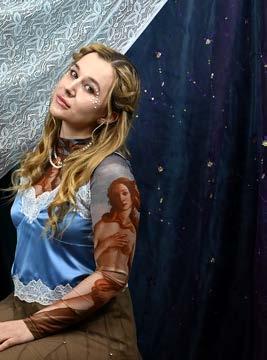
Fashion is highly competitive and always evolving, but true classics are never pushed out of the spotlight. When there is only so much room in the closet, quality should be chosen over quantity. As the years went by, clothes cycled in and out of wardrobes, some styles finding their way back multiple times. Though it has always been popular opinion that dictated these swings, eventually, our styles evolved from dressing like others to blend in, to dressing differently to stand out. This experiment peaked in the 2000’s and rarely repeats itself except for the notorious baby tee and low rise jeans. I believe we got so fed up with the exhaustion of change, that we started to look at what was memorable in the past. In every season, there is a decade or moment in time that we fixate on for the key trends in that era. When opinions and decisions are to be made,
those who are unsure look to those who are. It’s very empowering to see someone comfortable in their own skin while having a personal style. Some who might not yet know where their path goes may choose to follow a leader for direction. This is only natural, but if done too much can block any sense of original direction and any creation of personal style.
It’s as if we fear the inevitable; our identities being our own. What you choose to wear tells people a little about who you are, even before an introduction. To some this is freedom to express who they are. To others, who fear they won’t fit in, these choices are a burden, so they look to outside sources that will nudge them in any direction.

Media is another growing force in this fight and at times is inescapable. It’s always by your side to tell you every bit of information about what is going on in the world you are trying to find your place in. Unfortunately, there is only so much room, so when everyone adheres to the trend, it’s no longer applicable. This endless cycle has been escalating down a hill with no brakes and a block on the gas pedal.
28 modmuze FEB
It is not advisable to go on through life without making your own choices on what to wear. We can take influence from others but we shouldn’t only buy something just because everyone has it. Fast Fashion is currently one of the five polluting industries in the world. When you sacrifice quality for quantity, you’ll find your closet full of cheap garments that will need to be replaced quickly to stay facing quick replacement from cheap manufacturing and typical ‘fad’ style. I would bet that about half of the garments received from fast fashion brands don’t ever get worn. If one would find themselves in this loop, then begins the long journey to dig themselves out and into a stable wardrobe for everyday.
on finding my style and investing in it, rather than constantly changing aesthetics to fit with the current trends.

When opinions and decisions are to be made, those who are unsure look to those who are.
It didn’t take long for me to first discover that I was becoming a victim of the trend cycles. I was able to make a fewv outfits from the items I received, however, most of these pieces never left the floor of my closet until being put in a donation box. I felt bad for all of the waste I had caused and decided I would focus
This cycle of mindless style hopping is an unavoidable path for all who look to build their own personal aesthetic. One must face the influence of purchases for the factitious version of themselves, thinking that they would actually leave the house dressed in that identity, until reaching a level of security with their identity. Yes it can be difficult to form your own opinions on what you wear and leave yourself open to judgment, but it is way more empowering and recognizable to fully become your own person, no matter what may be defined as ‘in style’. This doesn’t mean you shall not be allowed to pick up what you like from the buffet. That’s the beauty of trends, it allows you the opportunity to try new things and have fun with items you might already own. Just know that even though everyone is wearing it now, it was always in your closet.
FEB modmuze 29
Winged Victory
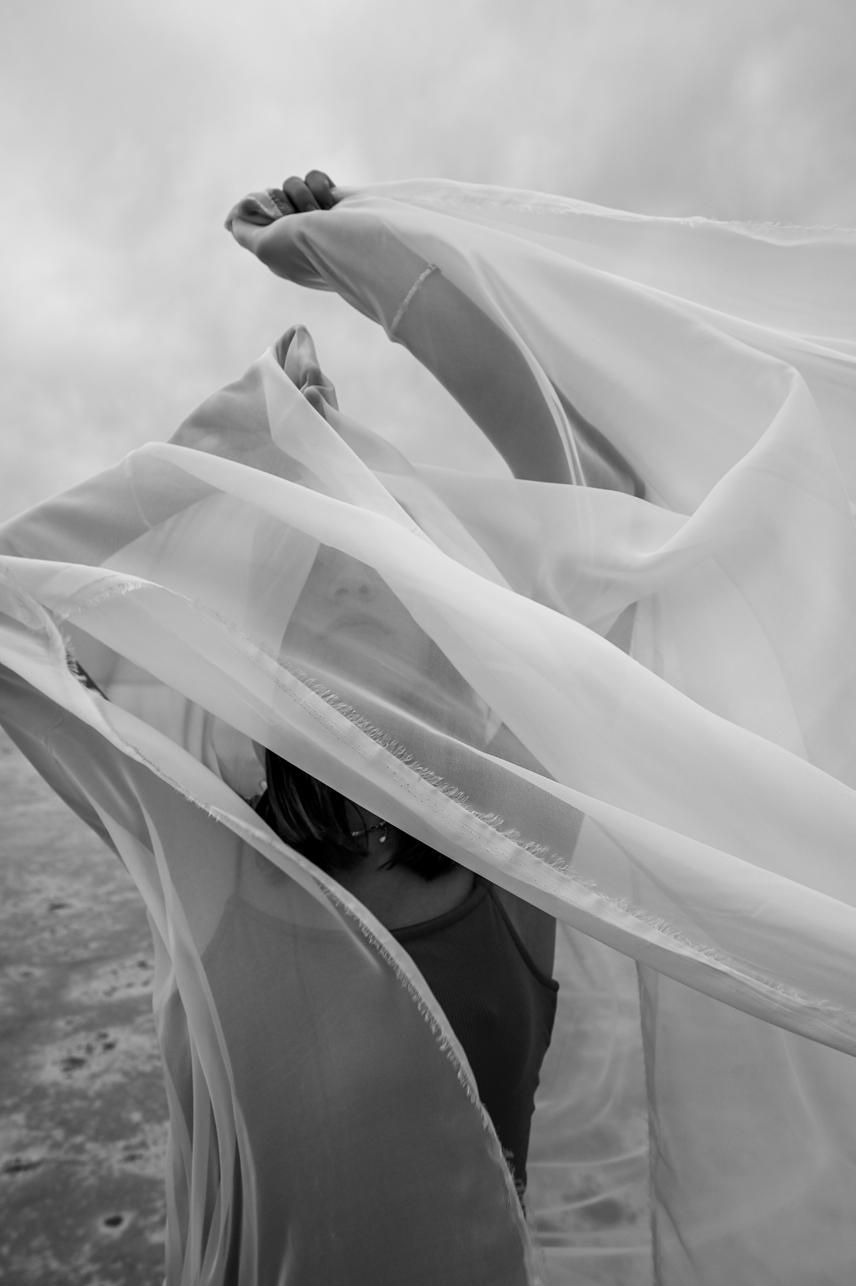
30 modmuze FEB
Styled by: Abigail Burnham asst. Sebastian Arias
Layout by: Bailey Wrightsman
Model: Sarah Evan Mitchell
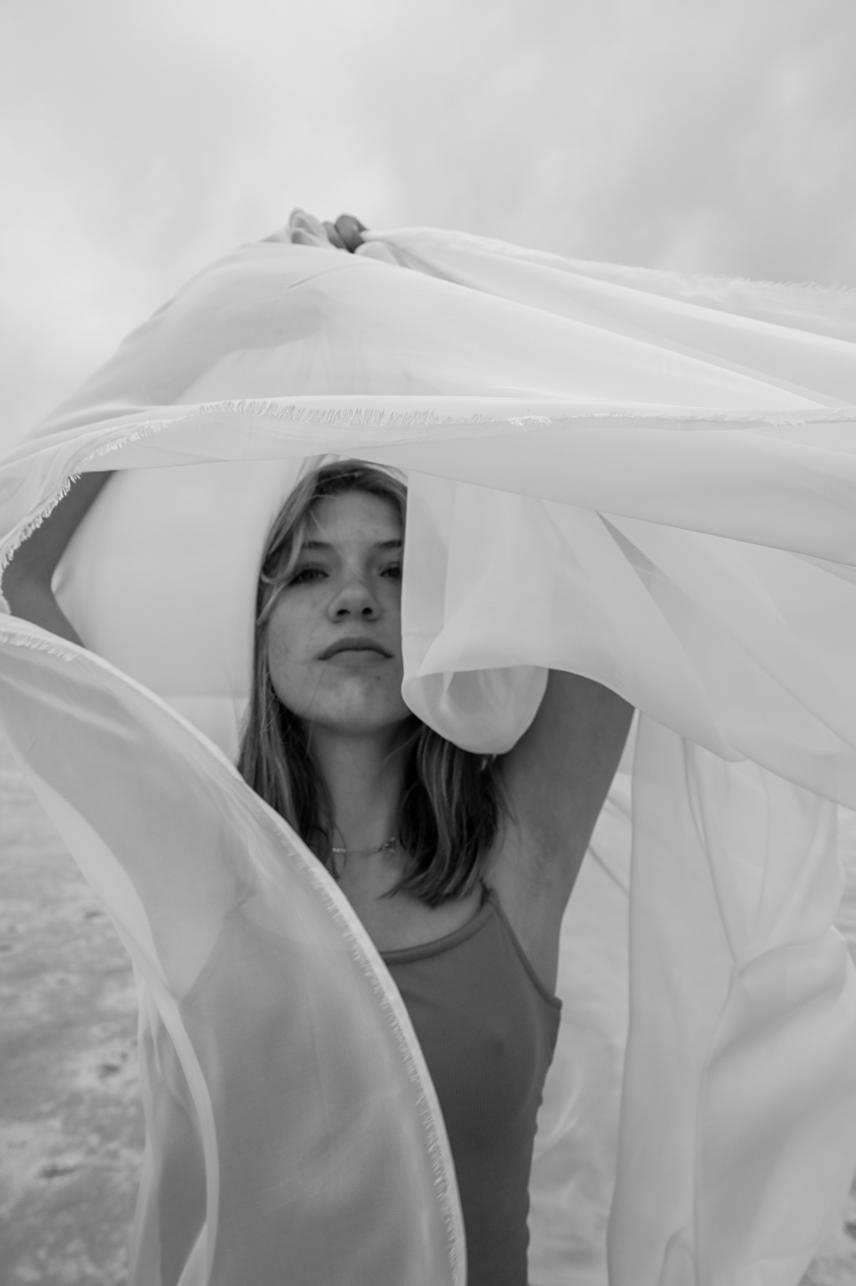 By Kennedy Skaggs
Photos by: Loren Rodgers
By Kennedy Skaggs
Photos by: Loren Rodgers
FEB modmuze 31

When the conversation turns to the most influential pieces in the evolution of art history, the Winged Victory of Samothrace is hard to miss. With gorgeous sculpted wings and silk fabric carved from marble that seems to cling to the skin beneath, it is nothing short of wonderful. But what is the story of the winged victor?
Nik e is the goddess of victory in Greek mythology. Though you may recognize the name from a popular athletic brand, her statues date all the way back to 420 BCE. It is
safe to say she had it first. She’s actually the reason they have the name at all. Nike is often seen in mythological literature with Zeus and Athena. It is even argued she and Athena originated as the same goddess but eventually broke off into two entirely separate deities, likely due to the passing down of stories orally. Athena is the goddess of heroic endeavor, so it’s an easy misconception. It is said that Nike gained the trust of Zeus by being the first to pledge her allegiance during the Titanomachy, which is the Battle of the Titans.
In later depictions, Nike can be seen serving Athena in Athens. This could also be a reason why Nike’s personal identity is questioned by scholars.
But when did Nik e take on this marble form? In 1863, French archaeologist Charles Champoiseau explored the ruins of the sanctuary of the Great Gods on the island of Samothrace and discovered part of the bust and the body of a large female statue. Champoiseau sent these pieces and fragments to the Louvre where she was displayed as she was
32 modmuze FEB
“With gorgeous sculpted wings and silk fabric carved from marble that seems to cling to the skin beneath, it is nothing short of wonderful.”

FEB modmuze 33

34 modmuze FEB

found until Champoiseau returned to Somothrace to obtain the Parian marble blocks that were the last remains of the statue. It was only after the pieces arrived in France that restoration began to bring the winged victor back to her former glory. Nike still remains in the Louvre Museum to this day, where she awes and inspires many. Her sculptor is still unknown despite the statue’s status as one of the most admired in the world. It is this mystery, in addition to her beauty, that draws people to Nike. Many could only dream of being able to study each chiseled moment within the piece. A statue of Athena can also be found within the Louvre, although the two are hardly mentioned in the same conversation these days. Despite their striking similarities, Athena’s statue was excavated in Baiae and Nike was found in Somothrace. Athena was also made from bronze, signifying her statue was likely created much later than Nike.
to the statue. Something about it is hypnotizing. That is what’s beautiful about art. There is something to inspire everyone. Whether it is paintings, sculptures, music or performance, there will be something to inspire everyone. When all else fails, find your muse, your goddess of victory. She is always sure to lead the way.
I was in my senior year in high school, in beginner’s art, when I first learned about Nike. Since then, I have been drawn
FEB modmuze 35
The Art of Theatre
 Jaycee Hampton
Jaycee Hampton
Connecting the past to the present by
36 modmuze FEB
Theatre has been a part of human culture since the beginning of time.
Ancient Greeks were the first to present live performance art, tracing back to the 6th century B.C. For centuries, people have enjoyed drama, comedy, music and other genres when they visit a theater. It has remained one of the most popular forms of entertainment.

As society evolves, so does theater, but it is modernized in unexpected ways. While continuing to honor traditional language and clothing, Oklahoma State University’s Department of Theatre strives to connect the past to the present.
Joan Korte, Associate Professor and Director of Performance, joined OSU’s Department of Theatre this past year. She grew up performing and her passion for the art has progressed into her work life. She teaches multiple courses which include a Shakespeare acting class dealing with heightened text, an advanced voice class, and a dialect class where students learn accents and dialects from different periods, countries and regions.
“In an acting class with the students, we start with what is the action of the character? What story are they trying to tell? What do they want? And then how we put that kind of physical intent into the language,” Korte said. “Of course, there’s some research we have to look at: the meanings of words or phrases, how it was used in the context of the time period and how can we share that with an audience.”
Korte recognizes that past language can be difficult for an audience to understand, but there is always a connection that resonates in our modern world. She said when language fails to make its point, it is the actors’ job to make sense of the language. The audience knows that Shakespeare writes about universal topics like love, betrayal, grief, and joy. The actor gets to make the connection to the audience with how they perform these themes.
“Don’t get caught up in trying to understand every word,” Korte said. “You won’t. That’s fine. Get caught up in the story and the way the actors are relating to one another.”
Commonly in grade school, students
FEB modmuze 37
are required to read Shakespeare plays, such as “Romeo and Juliet,” and “Hamlet.” Students read them in class and do their best to understand the meaning behind each written word, but Korte said Shakespeare didn’t write his plays to be read, he wrote them to be performed. His work was not published until seven years after his death due to the people around him not wanting his material to be lost.
Shakespeare didn’t write his plays to be read, he wrote them to be performed.
The theatre department has showcased a plethora of plays for an audience to enjoy this school year. “Macbeth” by William Shakespeare was presented at the Vivia Nail Locke Theatre in the Seretean Center for the Performing Arts on Nov. 17-19, 2023.

“If you see “Macbeth” on stage, even if you didn’t understand every single thing that was said in the show, because it’s Shakespeare, it gives a lot to think about,” Korte said. “Like our political world right now and the fight for power. We are in election season, so what happens when people are fighting for power and power goes unchecked?”
Jason Estala,
Assistant Professor of Costume Design, found ways to include modern technology in OSU’s Department of Theatre.
“I try to add 3D printing to a lot of shows,” Estala said. “We just did “Macbeth,” and it was this weird futuristic,

38 modmuze FEB
post-apocalyptic nod to the ancient. Macbeth’s crown, though it looked like this old metal forged crown, it was actually thermoplastic. The actor didn’t have to worry about having this giant, sharp, metal thing on his head.”
Depending on the play, designing a show is about a five to six week process. He said student assistants begin the process by sketching designs and breaking down the meanings of every aspect regarding the show.
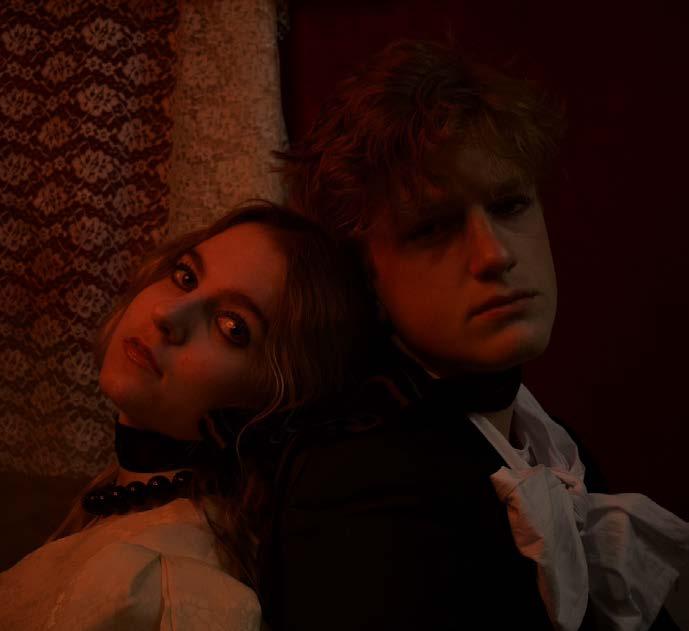
for that person, this character on stage.”
Estala joined OSU’s staff after moving from a larger university. He said working at past schools felt like a machine, trying to get as many students in and out as possible, not necessarily caring about building students up. He said OSU feels more like a home.
“We try to get as many projects that our students can handle at their skill level,” Estala said. “But building off of that, we need to push their skill levels.”
Estala said students can strengthen their portfolio while learning new techniques, skills and historical components of each show they work on. He asks questions that might not be a first thought, like would the fabric used realistically be worn in the past, or if it’s futuristic, would this be something the characters actually use?
“I always say I’m designing their closet,” Estala said. “This would be something, no matter if they’re King or Queen, they’re pulling it out of their closet. This is not a costume, this is their clothing
“The department here really made sure it was about the students,” Estala said. “Students came first and felt more student-centric. The mission is to educate students and to make sure that they’re prepped for the future. It wasn’t about numbers and getting them in, getting them out.”
The art of the theatre is not dying, nor it ever will. There’s more to interpret outside of Shakespeare’s plays and it is displayed everywhere. Modernization doesn’t involve changing themes, it requires recontextualizing them in a setting that resonates with an audience.
FEB modmuze 39
Photos by: Sebastian Arias Styled by: Sarah Evan Mitchell, asst. Ruby Van De Steeg Layout by: Ruby Van De Steeg Models: Keaton Mitchell, Becca Brown
 by Cooper Carr
by Cooper Carr
A CONVERSATION WITH ART STUDENTS

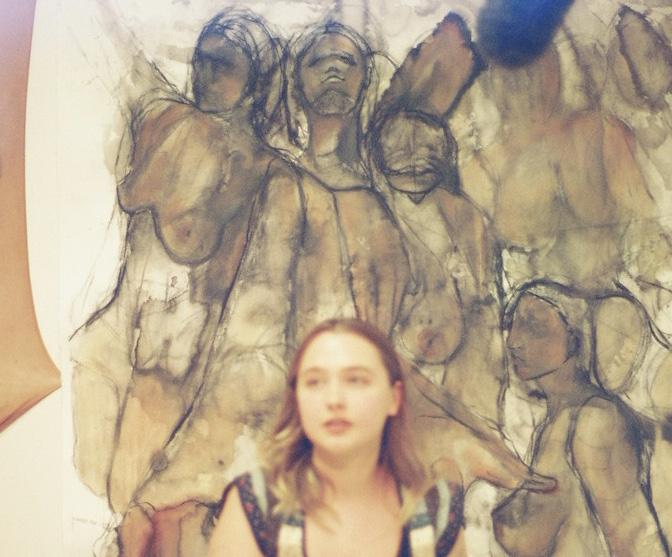
 Photos by:Rodney Ashaba
Styled by: Catie Barrett, asst. Meredith Mountford
Layout: Hadley Waldren
Photos by:Rodney Ashaba
Styled by: Catie Barrett, asst. Meredith Mountford
Layout: Hadley Waldren
40 modmuze FEB
Models: Julianna Oathout, Bryant Chitsey, Lili Cordes, Chauncie S. Ball




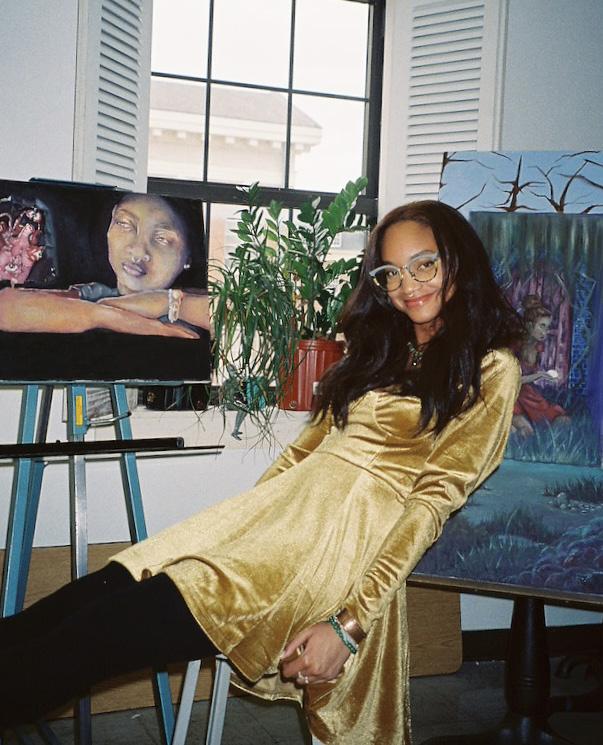
We spoke with four artists at Oklahoma State University about what inspires them, what they want to express through their art and what is next for them in their odyssey. Read their words and view their work here.
FEB modmuze 41
How H as your art grown t H roug H your training in sc H ool?
“I believe my art has grown definitely through the people I’ve met and the other working artists ... I didn’t realize the opportunities that artists have, and I think that’s important for the average person to know as well because a lot of people are pushed away from the arts because they don’t think that it’s something reliable, but there are so many opportunities out there for artists.”
wH y do you see value in continuing your artistic journey?
“... not only for viewers but for myself. I think that a lot of times I feel pressured into going into a career that is expected to make more money by the average person, but I think at the end of the day what I would be most happy with is creating and speaking to an audience .... I’m open to the idea of it going in any direction. It’s more rewarding to me honestly not knowing what’s gonna happen.”
How can you and ot H ers do new t H ings in old or busy mediums?
“I think doing new things in older mediums, it’s important to still recognize how historically art has been constructed ... I think it creates a grander experience where you feel smaller than the piece itself.


42 modmuze FEB
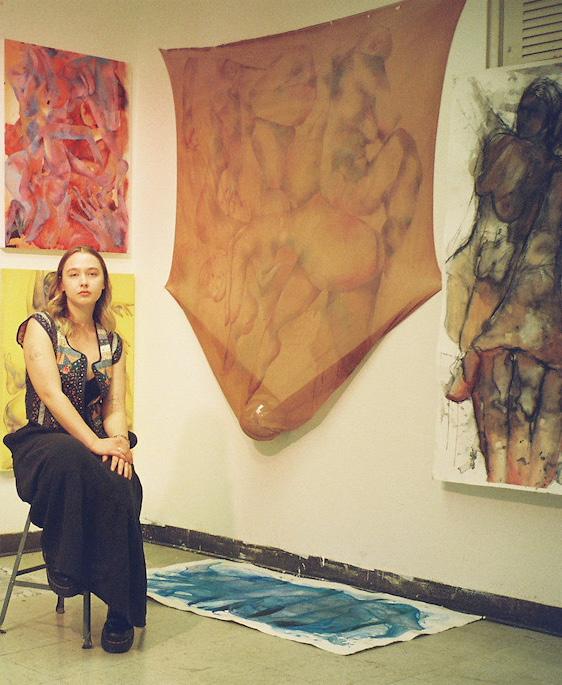
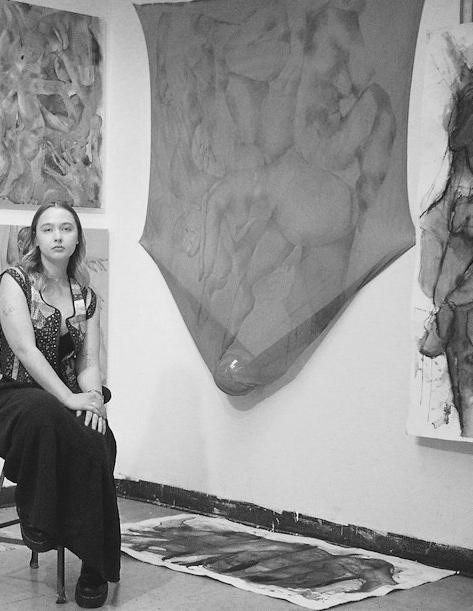 Lillian Cordes
Lillian Cordes
“... continuing my practice with physical works is something that I can do not only because of the texture and the joy I get from painting physically, but I think it’s also really important to still appreciate those historical works that were a foundation for where art is now.”
FEB modmuze 43
Julianna Oathout


“I want people to know that my art is a window into my world.”
44 modmuze FEB
d o you find inspiration in classical fine art?
“I find lots of inspiration in classical fine art ... I just think it’s fantastic that classical art was the remembrance of things before there were cameras and TV”

How H ave your art classes H elped you improve as an artist so far?
“I think learning the fundamentals helps you be able to translate the vision you have in your head. Because I can picture all these beautiful things that I want to paint in my head, but you know, if I don’t have a proper understanding of perspective or color theory then I can’t properly translate what I want onto the canvas.”
wH at do you want people to know about your art?
“It’s moments where I’ve been inspired, it’s capturing people who have inspired me, and I like to emphasize the feelings and the movement and just the overall experience I had in that moment through brushstrokes and through colors.”
FEB modmuze 45
wH at contemporary artists inspire you and w H o do you t H ink is pus H ing t H ings forward?
“Jackie Liu ... I can really connect with her and experience every stroke she makes on her canvases ... I want to see more art that comes from the soul rather than a banana on a canvas. No hate to the banana on a canvas but I think there’s more things out there to express than simple lines and simple circles and I feel like they can be defined more in art representation.”
t ell me about t H e intersection between digital and p H ysical art for you.
“I feel that digital and traditional art are pretty similar because you can’t just come into digital art without knowing the basics of traditional art ... I always go back to a canvas even though I have full access to a tablet.”
How H as your art grown t H roug H training in sc H ool?
“My art in school was pretty good all the way up to my freshman year of high school ... A big part of my art before my high school experience was a friend of mine who was also an artist and he taught me more than any teacher really on how to use texture and perspective and anatomy.”


46 modmuze FEB

“When it comes to color, when it comes to technique, when it comes to texture you really want to know how to work your way around the canvas first”

Chauncie S. Ball
FEB modmuze 47


“And so, seeing these artists and printmakers that are really pushing those bounds and figuring out how they can make the mark that they want, is very inspiring.”
Bryant Chitsey
48 modmuze FEB
wH at do you want people to know about your art?
“I want the viewer to kind of base their understanding of my piece off of their life experience and their perspective ... I have a big emphasis on material, not only in my print work but in my book arts and kind of my art practice as a whole, even my ceramics.”

wH at contemporary artists inspire you and w H o do you t H ink is pus H ing t H ings forward in our era?
“I look a lot at folk artists, definitely a lot of printmakers, but also drawers and painters, sculptors, ceramicists, kind of everything ... I look a lot at Robert Rosenberg and his prints. I look at Edward Hopper. The colors of his paintings are very, very impressive. I look at Faith Ringgold. That’s kind of where I got the inspiration for this body of work
d o you see trends or c H anges on t H e H orizon in an increasingly digital space?
“It’s a lot different from painting, or drawing or anything like that, where you have various mediums, but it’s still kind of all under one umbrella, whereas printmaking, I would say if you are able to make an impression using ink onto another surface that could be considered a print.
FEB modmuze 49
Art


its
50 modmuze FEB
in all
Forms


FEB modmuze 51
by Emily McCaslin
all
Paint on a canvas, an art museum, and a picture taken by a photographer. These are all obvious forms of art, right? But what about the things that aren’t so obvious?
The way a chef puts his heart and soul into the dish he is cooking. The way a musician writes what she’s feeling and puts it to notes. A gardener making a fresh bouquet of flowers to give to a loved one. A film director staging a scene.
Art can come in the form of food, music, love, people, movies, nature; you name it. It’s all around us. Who said art had to be only a physical canvas with some paint and a painter?
My professor once gave me eye opening advice. As an assignment, he told us to put down our phones and walk home from class with no distractions. Sounds simple when you say it like that, but when you actually make it a point
to notice what’s right in front of you, you realize what you’ve been missing.
When I started doing this, I noticed things changing around me. I saw some people I knew and got to give them a quick wave. I noticed the new flowers on library lawn and squirrels (that we may or may not pay for) running up the trees.
Many people call it “the art of noticing.” If we’re so focused on what we have to do that day or how we’re going to get it all done, we don’t leave time for ourselves to truly relax and appreciate what was made just for us. It’s so important to notice the world around us and the art intertwined in it all. Everything on earth was carefully crafted, making every little thing a specific piece of art. It was created for our benefit and there are so many things to be thankful for. When you start treating the world like the masterpiece that it is, hopefully you will start to appreciate the little things more.
52 modmuze FEB
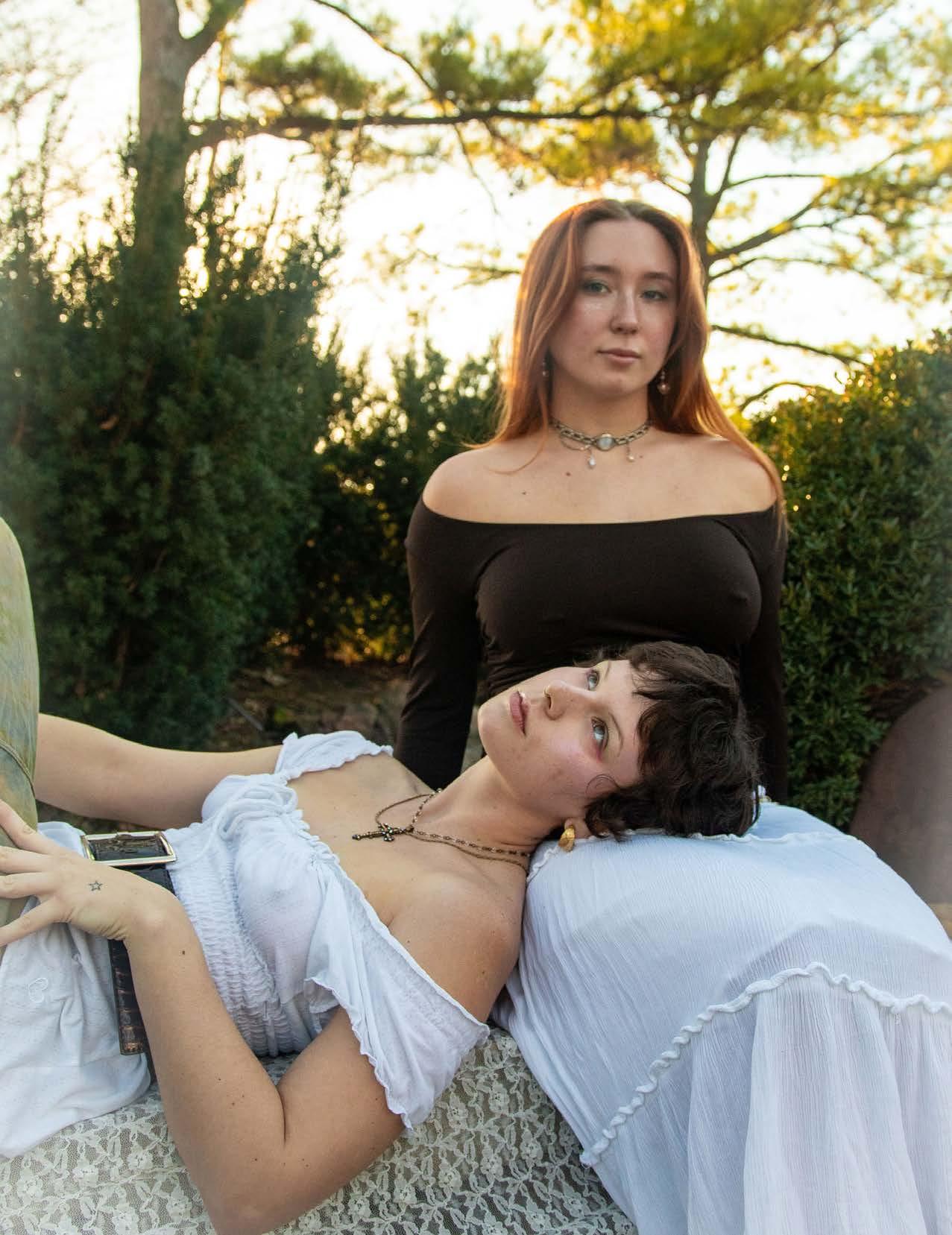
FEB modmuze 53
Art is me & you
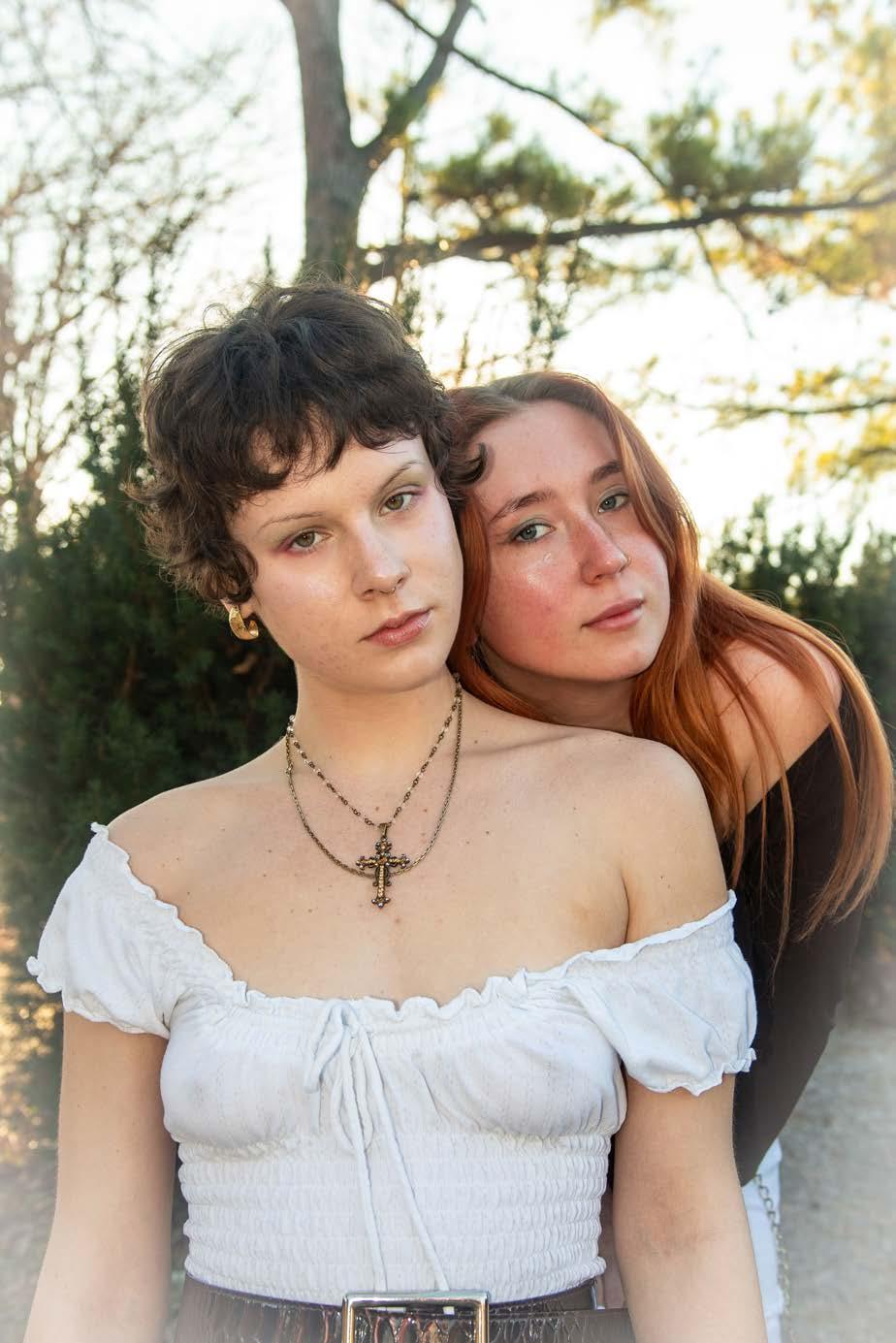
54 modmuze FEB
The best thing about art? You can create it yourself, too. Let art be an outlet for you to express how you’re feeling and put your thoughts into the world. Maybe you can even help someone along the way.
Art is so powerful. We’ve seen it advocate for issues and give people a voice. Don’t think for a second it doesn’t have the power to help you too. I hope art has the power to change your mindset when you’re having a bad day and give at least a little bit of hope that everything is going to be okay.
Art is your best friend’s laugh. Art is the way the leaves dance on the trees in the wind. Art is the smile on your face when you put on an outfit that you love. Art is your first kiss, your first college friend, and the first snow day of the season.
Art is the way a sharpied “A” looks like on your essay. Art is seeing all your hard work pay off. Art is the relief you feel when the thing you’ve been stressed about finally figures itself out.
Art is your family coming together, your weekly sonic dates with friends and sticking your head out of a car window in the summer.
Art is you and me.
Art is all around you. Imagine how much your mindset could change if you opened your eyes to it.
Photos by: Hannah Cozens
Styled by: Jordan Reimer, asst. Maggie Levy
Layout by: Bailey Wrightsman
FEB modmuze 55
Models: Hannah Schob, Layla Gargasz

‘I Could Do That’
56 modmuze FEB

In Defense of Modern Art
by Hadley Waldren
FEB modmuze 57
Let’s say you are walking through a museum, strolling past paintings and sculptures, lingering in front of others. You will take your time to appreciate the pieces that speak to you most and breeze by the ones you feel have less to offer you. Now imagine yourself turning a corner in the gallery, and in the next room there is a mound of candy piled up against the wall, and a sign inviting you to take a piece. How long will you stand in front of this scene? Will you walk away from it with candy in your pocket or mouth? Let’s say you eat it. When the candy has melted away and the taste is gone, will you still think about the pile you left behind?
Whether it comes from serious art critics or TikTok videos with the caption, “standing next to art we think we could make,” the opinion that modern art is easy to create or that it’s not “real art” seems to be held by many. “Modern art” refers to art created between the late 1800’s and the 1970’s, while work made between 1970 and today falls under the umbrella term “postmodern.” Usually, the art museum goers refer to as “easy” is from the postmodern movement. I have hope that these expressions of disdain come from lack of understanding. Of course, we want an emotional reaction. Art that makes you feel something is art that is doing its job. In the case of postmodern pieces, the jump from the canvas to the meaning can seem a bit further.
Although it can seem like it’s a stretch
to find meaning, not all postmodern art is hiding its emotional value. Keith Haring – one of the most famous American pop artists – was heavily ridiculed for his pieces being too doodly or, in more conservative pockets of the art world, vulgar. However, today it is widely accepted that he was an important activist during the AIDS epidemic. One of his most heartbreaking pieces visually depicts the huge loss the LGBTQ+ community felt during that time. The piece is titled Unfinished Painting, and it is exactly what its title implies: a painting with only one corner complete, wet paint dripping down into blank canvas because it ended well before it was meant to.
The AIDS epidemic inspired many postmodern artists to create memorable pieces. Think back to the candy pile. Have you carried your piece with you? Untitled (Portrait of Ross in LA) is an interactive piece that has traveled to several museums since its first installation. It comes with specific instructions that the pile should weigh 175 pounds and be replenished as needed. Felix Gonzalez-Torres made it as a tribute portrait to his partner Ross, a 175-pound man who died of AIDS. Gonzalez-Torres watched the disease take the love of his life, piece by piece. And now, through the pile of candy, he invites you to do the same. Eat away at the pile little by little. The only difference is the candy pile will be replenished; it will stay 175 pounds.
Though there is an important place for
58 modmuze FEB

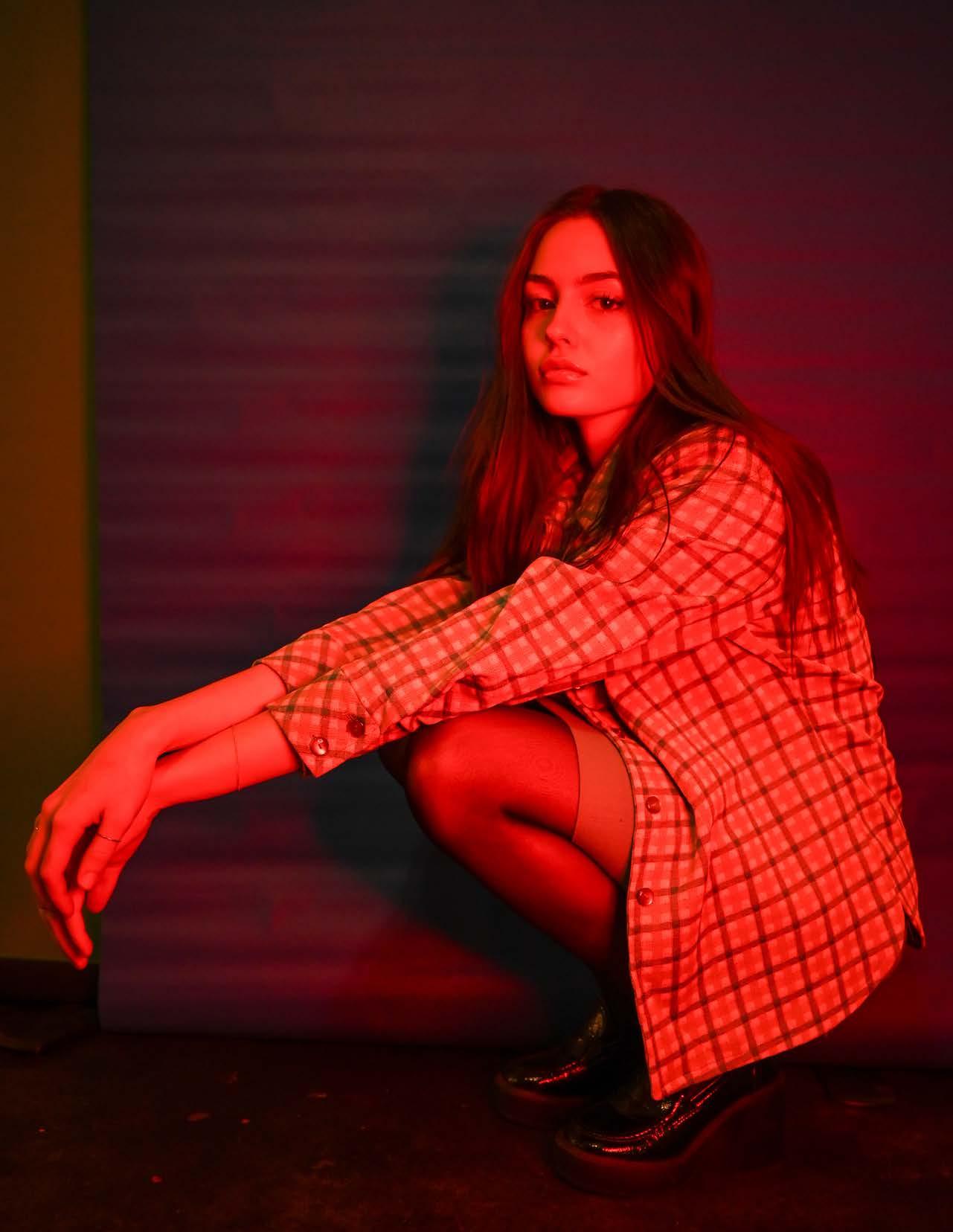
FEB modmuze 59
 Photos by: Loren Rogers
Styled by: Audrey Flood, asst. Sarah
Evan Mitchell
Layout by: Hadley Waldren
Photos by: Loren Rogers
Styled by: Audrey Flood, asst. Sarah
Evan Mitchell
Layout by: Hadley Waldren
60 modmuze FEB
Models: Charlotte Wilson, Hayden Gibson
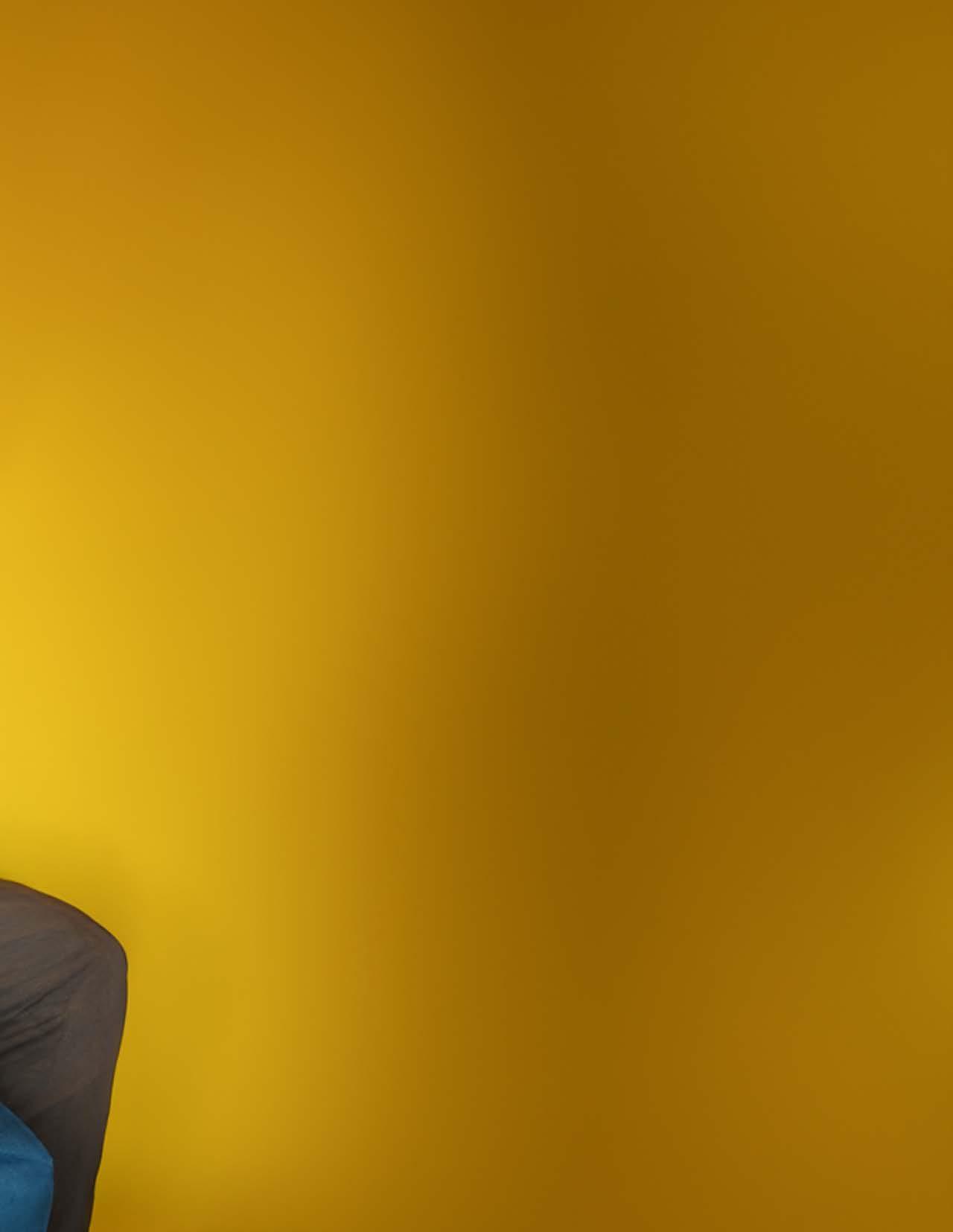
art that makes a statement, there is still room for art whose main purpose is to show off technical prowess in color theory. Some of the most vilified works of arts are large, simple paintings with few colors. Yves Klien’s artistic obsession with blue lead him to be an innovator of paint composition, creating a new way mixing pigments and oils, yet many people believe his art to be “just blue.”
“Color, as the most relative medium in art, has innumerable faces or appearances. To study them in their respective interactions, in their interdependence, will enrich our ‘seeing,’ our world—and ourselves.”
When Who’s Afraid of Red, Yellow, and Blue was vandalized with a box cutter, the restoration process revealed to the public how truly intricate the piece was. Many conservators refused to work on it because of how detailed and high profile the job would be. Eventually, the “restoration” was done by taking a roller with red paint over the entire canvas, essentially ruining the painting forever.
I will never claim to be a master color theorist. However, I can understand that art would not be as impressive and sought after as it is today without the foundational work of color theorists that came before. Josef Albers is one of these color theorists. His work laid out the meticulous study of how colors interact with each other and their mediums. His book, “Interaction of Color” opens with the lines,
“When someone says, ‘red’ (referring to a description or a color), and when fifty people are listening, you can expect that fifty people will think of red. You can be sure that all of these reds are different.” (Albers, “Interaction of Color”) When we think a red canvas is just a red canvas, we completely ignore the history of how that red was made; the way it was mixed, the way it interacts with paper, silk, or any other medium and the way each person sees that red. These are all important in the context of art history.
“Color, as the most relative medium in art, has innumerable faces or appearances. To study them in their respective interactions, in their interdependence, will enrich our ‘seeing,’ our world—and ourselves.” (Albers, “Interaction of Color”)
How would you feel standing in front of a solid red canvas? Or a pile of candy? Or an unfinished painting? Maybe you wouldn’t feel anything; maybe you wouldn’t consider the meticulous work that went into each pigment. Hopefully, in a museum full of gorgeous and impressive works, you can see that postmodern art belongs. It has its place and its value – and above all – it is more than pieces you could make yourself.
FEB modmuze 61
Making An Empress
by Leah Brainerd
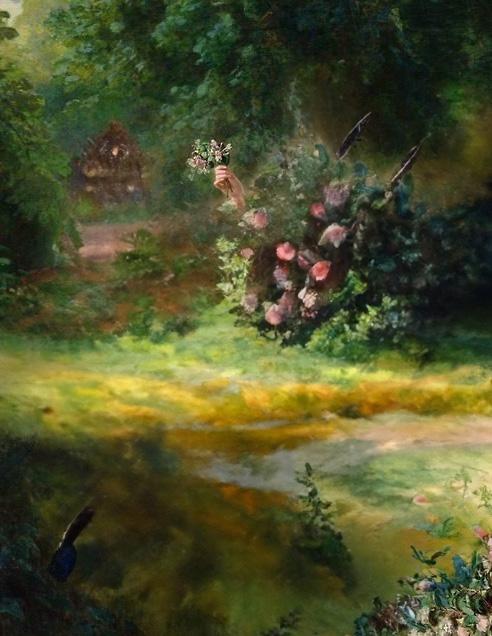

62 modmuze FEB
Step into Franz-Xaver Winterhalter’s whimsical world of royalty in a breathtaking display of grace and abundance.
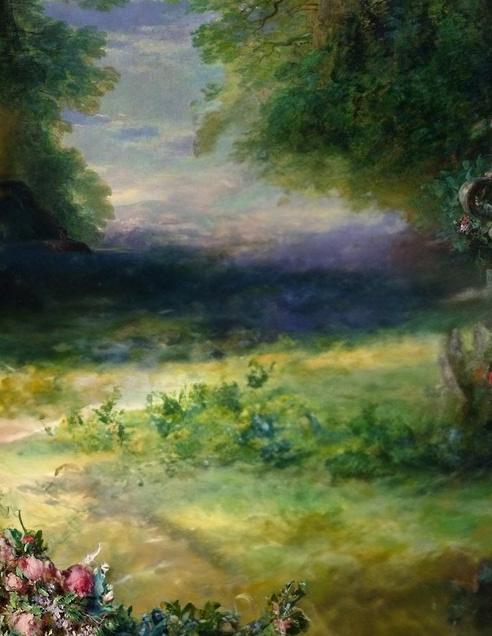

FEB modmuze 63

Painted for Empress Eugénie of France, she herself is the main focus of the painting. She looks out at the viewer while sitting above all the other women and is painted lighter and more fair than her counterparts. Born Eugénie de Montijo on May 5, 1826, to Spanish nobility, Eugénie was educated in France, Spain, and England and married Napoleon III of France. Napoleon III became Emperor of France and Eugénie became Empress until his overthrow in 1870 and eventual death in 1873.
The rest of the women in the picture, her ladies in waiting, were all noble born and important in their own right. In the pink dress to the left is the Princesse d’Essling, chief lady in waiting. Behind her to the right is the Duchesse de Bassano, matron of honor. In front of her are the Baronne de Pierres and the Vicomtesse de Lezay-Marnésia. In the front in a green dress is Comtesse de Montebello. To the right are three other ladies in waiting, the Baronne de Malaret, the Marquise de Las Marismas and the Marquise de la Tour-Maubourg. Winterhalter’s attention to detail in their attire and expressions further enhances the overall ambiance of aristocratic refinement.
Eugénie herself wears no visible jewelry, a reference to the time she declined the gift of a diamond necklace from the municipal committee of the capital, instead requesting that the value of the jewelry be spent to build a school for children. Princess Eugénie was known for her compassion and generosity toward the less fortunate. She actively supported charitable causes and sought to improve the lives of those in need, demonstrating her empathy and concern for others. She was also a friend to many, shown in the painting with the honeysuckle that she offers to Princesse d’Essling, signifying true friendship. In addition, the lilac throughout the painting signifies springtime and the growth and flourishing that goes along with it that the empress brought to the country.
Empress Eugénie also demonstrated a strong sense of determination and resolve, particularly in her support of her husband’s political ambitions. Despite facing opposition and challenges, she remained steadfast in her efforts to fulfill her duties as Empress of France. She took a keen interest in literature, art and politics, en -
 Photos by: Loren Rodgers Styling by: Johanna Gonzalez, asst. Sebastian Arias
Photos by: Loren Rodgers Styling by: Johanna Gonzalez, asst. Sebastian Arias
64 modmuze FEB
Layout by: Patricia Dimick Models: Avery Anderson, Shae Gridanus, Shealynn Hoffman, Liz Mateo-Johnson, Johanna Gonzalez, Yasmine Abusaleh
gaging in discussions on various topics with intellectuals and statesmen of her time. In addition, Empress Eugénie was a trendsetter in fashion. Her impeccable sense of style and elegance influenced the fashion trends of her time, setting the standard for aristocratic attire.
Winterhalter’s skillful use of light and color, along with his ability to portray his subjects with dignity and poise, made him a favorite portrait artist among European nobility during the 19th century. Winterhalter was celebrated for his elegant and meticulously detailed portraits, particularly of European royalty and aristocracy and was a favorite of nobility and especially Empress Eugénie. However, when it was shown at the opening of the Paris Exposition Universelle of 1855, the portrait received criticism, as many critics thought it garish and sloppy, with Winterhalter being more interested in painting the dresses than the famous women. Théophile Gautier spoke of the “coquettish and brilliant style […] a little too obsessed with elegance,” and Gustave Planche severely criticized the painting, as the “dresses were excessively coquettishly spread out but contained nothing whatsoever.” However, despite critical scorn, the painting was and still is a huge public success.
This painting has always stood out to me because of the sheer excellence and grandeur of the portrait. The larger-than-life dresses remind me that standing out is beautiful and that dressing up is a privilege.
The portrait itself is famous for its exquisite portrayal of Princess Eugénie and is renowned for capturing her beauty, elegance and regal presence. Winterhalter’s meticulous attention to detail, skillful use of light and color and his ability to convey the opulence of royal life contributed to the painting’s fame. Additionally, the inclusion of Princess Eugénie’s Ladies in Waiting adds depth to the composition, showcasing the splendor and grandeur of the royal court. Overall, this masterpiece is celebrated for its exquisite craftsmanship and its portrayal of aristocratic refinement, making it a cherished work of art in the history of portraiture.



FEB modmuze 65

Portrait of a Man Afflicted
A look at Francisco Goya’s expansive and troubled career by Jillian Eckert
66 modmuze FEB
When gazing at a piece of art, we often experience emotions we can’t quite name. Art makes you think—it doesn’t tell you what it means. You have to determine that for yourself. In many ways, artists peel back the layers of the human psyche, delving into and unmasking its deepest and darkest parts. Spanish painter Francisco Goya exemplifies this aspect of artistic expression.
Francisco Goya is widely considered one of the most important and influential artists of the late 18th and early 19th centuries. He rose to prominence as a court painter, portraying the royal family in a satirical, noticeably unflattering way. Around 1793, Goya became deaf due to an undiagnosed illness. At this point, his work took a darker tone. Goya painted 11 small works between 1793 and 1794, depicting bleaker subjects and drawing inspiration from fantasy. The most notable of these paintings, “Yard with Lunatics,” is a brutally honest depiction of asylums at the time. It’s horrific and wretched, reflecting some of the most depraved human behavior. It was a significant departure from Goya’s usual commissioned work and also points to his rapidly declining mental state. While we don’t know much about Goya’s inner thoughts, the artist did note that these paintings were borne from a fear that he was losing his mind.
In the late 1790s, the Duke and Duchess of Osuna commissioned a series of paintings from Goya depicting witches and witchcraft. Some of Goya’s most recognizable works, such as “Witches’ Flight” and “The Spell,” came from this commission. These paintings draw imagery from the Spanish witch trials of the 17th century, during which women were persecuted for embodying anything other than the perfect, obedient wife and mother. Society feared these women and the entire idea of women’s sexuality, but Goya’s witches celebrated them. The paintings are certainly unsettling, but in many ways, they mock society’s fear of women through exaggeration and satire. The Duchess of Osuna herself embodied this rejection of societal expectations for women. She was educated and outspoken, refusing to conform to others’ ideas. Even today, women embrace witches and witchcraft as figures of empowerment.
Goya continued to take commissions through the early 1800s. During the Peninsular War of 1808-1814, he created a number of works depicting and protesting the war. “The Disasters of War,” a series of etchings published 35 years after Goya’s death, were particularly gruesome and disturbing. Goya’s anger is evident in these works, unapologetically showing the viewer the realities of war.
Goya spent his later life in a lone farmhouse, which became known as “The House of the Deaf Man.” Here, he created his famous Black Paintings, a set of 14 works painted on the walls of his home. The iconic “Saturn Devouring His Son” comes from this collection, along with the desolate “The Dog” and the harrowing “Witches’ Sabbath.” Goya himself didn’t name these paintings, nor did he write anything about them. They are honest, grisly reflections of a man tortured both mentally and physically. They’re the only documentation we have of Goya’s thoughts to
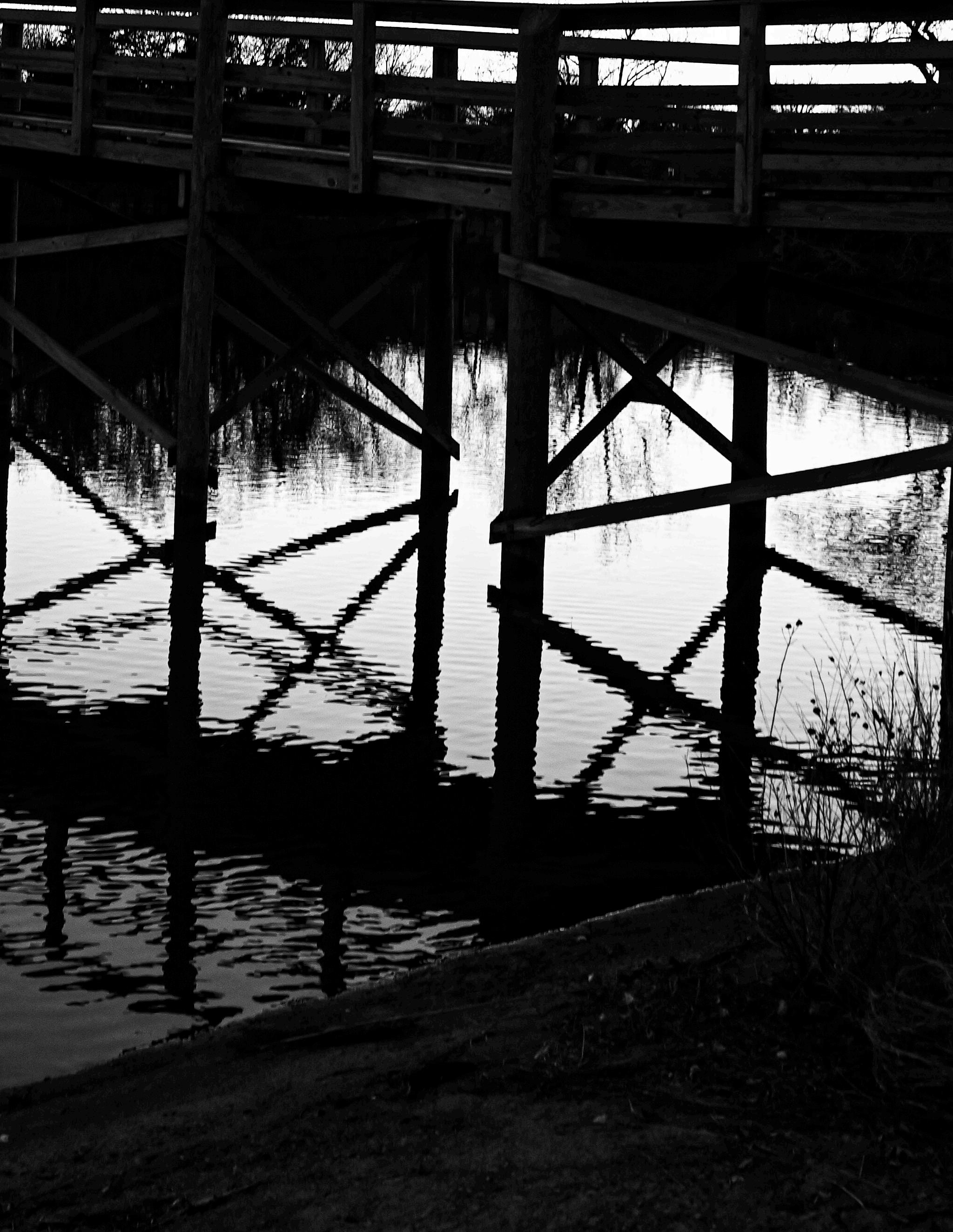

FEB modmuze 67

ward the end of his life, and even then, they don’t exist exactly as Goya created them. Having been painted on plaster, the Black Paintings were incredibly delicate. When they were moved to a canvas support 50 years after Goya’s death, the paintings suffered inevitable damages. They’ve been restored, but they likely pale in comparison to how they appeared on the walls of Goya’s lonely home.
Francisco Goya’s body of work is a narrative, showing the deterioration of hope and happiness in the face of society’s evils. Even today, Goya’s paintings evoke strong emotions—fear, wonder, discomfort, sadness, solace. His work is a microcosm of the darkest parts of humanity, on both a societal and individual level. Goya’s art forces the viewer to confront their own inner turmoil, offering disturbance and comfort in equal measure.
68 modmuze FEB




Photos
Rodney
Styled by: Meredith Mountford, asst. Rodney Ashaba, Sebastian Arias
Layout: Sebastian Arias
Model: Jakey Hartsfield

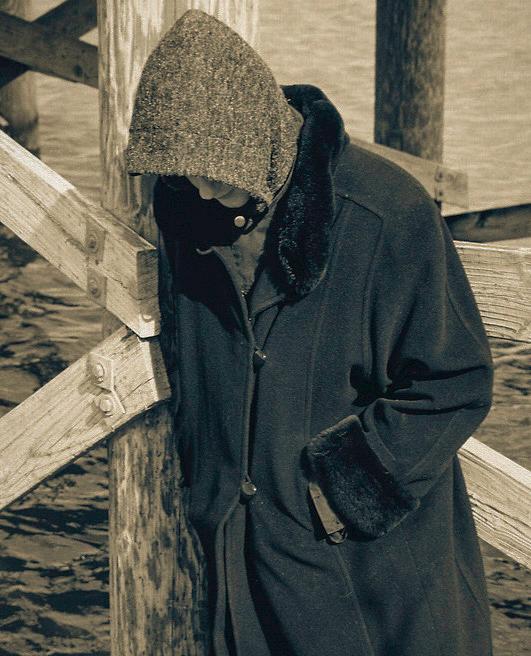 by:
Ashaba & Loren Rogers
by:
Ashaba & Loren Rogers
FEB modmuze 69

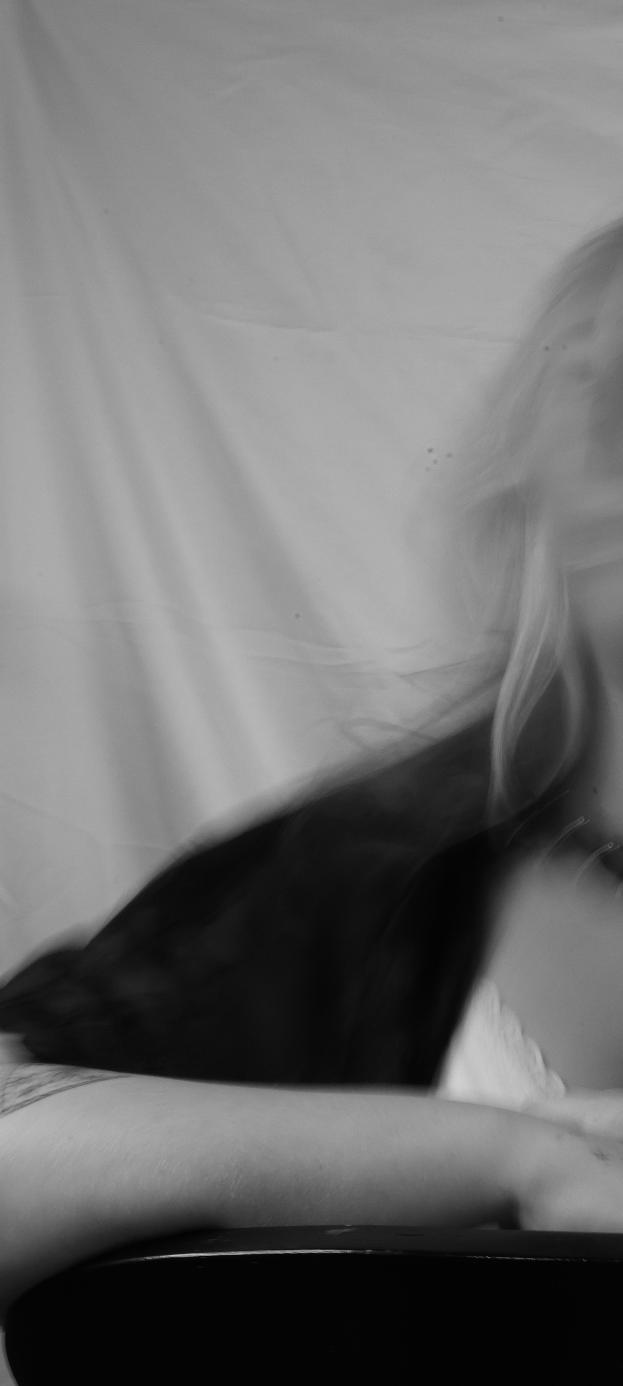
70 modmuze FEB
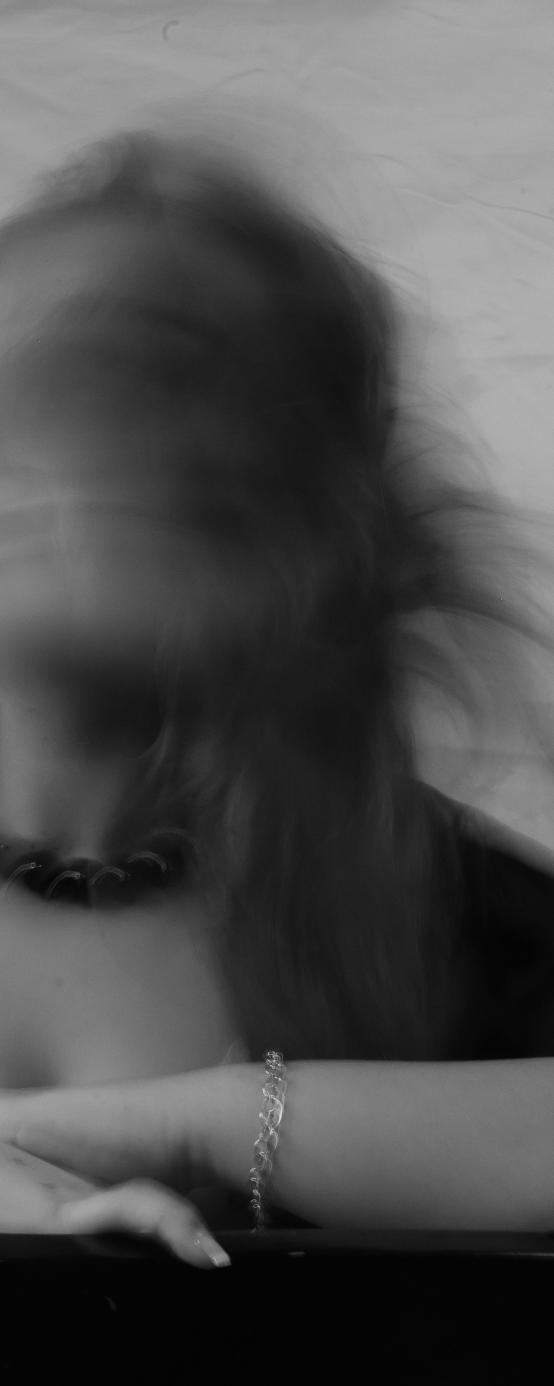 by Kamryn Chapman
by Kamryn Chapman
Censorship In Art
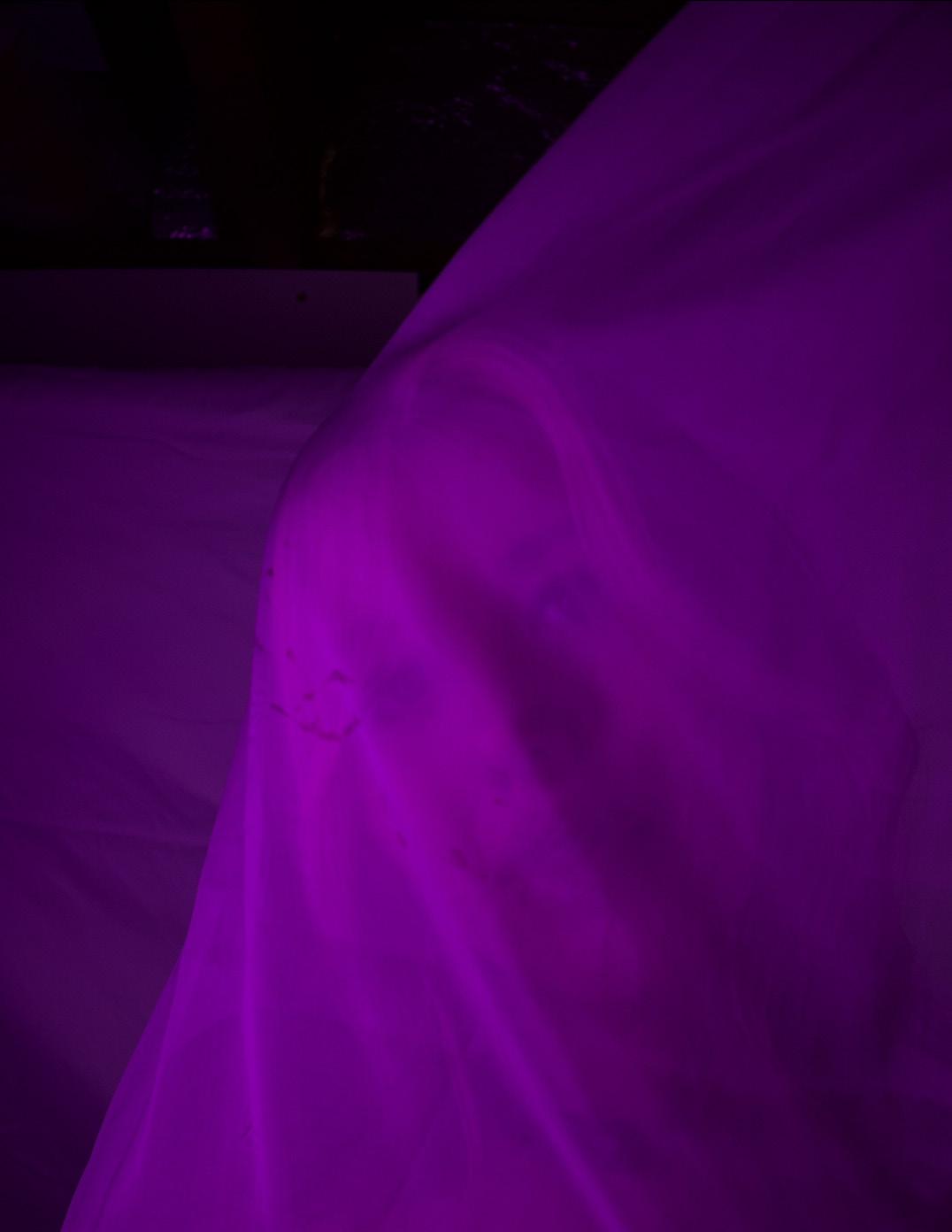
FEB modmuze 71
Have you ever gone back to change something you put into the world? Maybe you did it because you didn’t like what you had to say or show, or had a feeling someone else wouldn’t like it. Though it wasn’t always as easy as pressing an “edit post” button, some artists have covered their tracks to improve their work, make it more palatable, or in some cases, save themselves from ridicule.

1One instance of an artist’s cover-up comes from George Seurat’s 1890 painting, “Young Woman Powdering Herself.” Seurat originally depicts his mistress, Madeleine Knobloch, sitting in a chair doing her morning skincare routine, and we can see his reflection in a mirror on the wall.
However, before it was displayed, the artist decided to show it to a friend. His friend, unaware of the illicit affair, found the self-portrait funny. Seurat then decided to conceal his secret by painting a vase of flowers over himself, dodging a bullet with his artistic choice.
Palma Vecchio’s piece, “Woman at a Window” circa 1510-1530, conceals an even

 Photos by:Toni Purnell
Styled by: Abigail Burnham, asst. Jordan Reimer
Layout by: Sophia Rodriguez
Photos by:Toni Purnell
Styled by: Abigail Burnham, asst. Jordan Reimer
Layout by: Sophia Rodriguez
72 modmuze FEB
Model: Audrey Flood
2
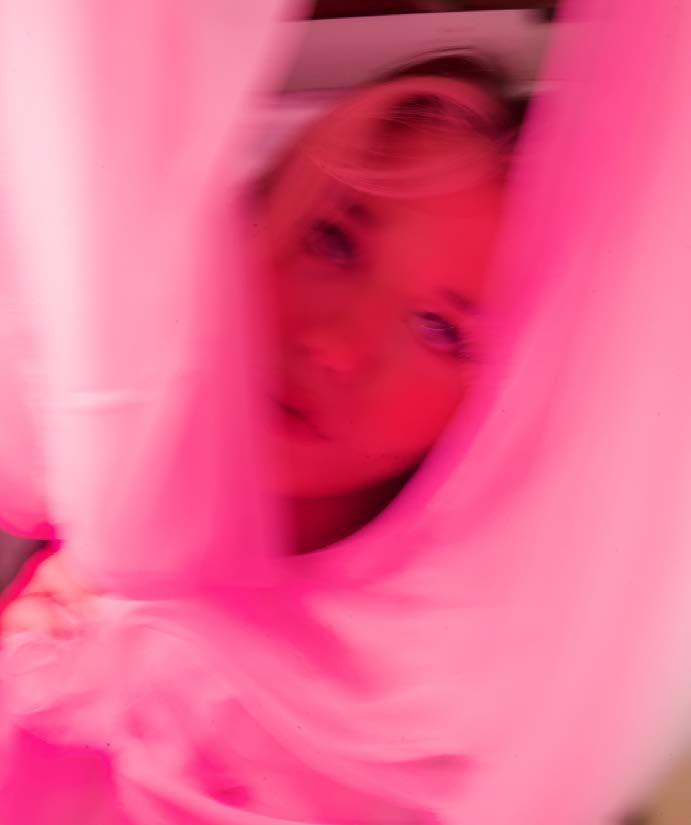



larger portion of work. Restorations of the painting in 1978 found that it was heavily altered at some point in the 19th century to fit the modest social norms of the time, and to make it more saleable. In the original work, the woman has a vastly different jawline, more expressive eyes, blond hair, and visible nipples. It’s speculated that she was a prostitute, and was changed to look more modest and avoid controversy for the resale of the painting. Although they’re in the same setting, there is hardly a resemblance between the two women. FEB modmuze 73
3

A portrait of Isabella de’ Cosimo
I de Medici, a 16th-century Italian noblewoman, was done the same disservice that had been done to “Woman at the Window.” In an examination to ensure its authenticity, museum experts found that Medici’s portrait, originally portraying the noblewoman’s unique features, had been covered up in the 19th century by yet another generic depiction of a “beautiful woman.” A restoration revealed an older woman with larger hands, a wider nose, a longer face, wrinkled eyes, and an expression that conveys a multitude of emotions. For centuries, people believed that the 19th-century altered version was what Medici had truly looked like. To no one’s surprise, it is believed that this alteration was made to make the painting more appealing and marketable.
These two eerily similar examples provoke the age-old question: what constitutes beauty? Does the world honestly prefer a carbon copy, “proper,” “perfect,” emotionless appearance to the real face of a real woman? And will we as women ever stop trying to appeal to that world?

Long before these paintings were altered and still today, women’s appearances have been altered for a spectator. Be the spectator known or unknown, the end goal is the same: to be more marketable, more likable, and better than before. It’s not so much that we must stop trying to be these things, but rather notice what we’re doing, why we feel motivated to do it, and decide if we want to continue the performance for our own sake; not solely for the sake of the spectator. 74 modmuze FEB
Though some motives for cover-ups are calculated, others are much simpler. For example, Vincent Van Gogh’s masterpiece, “Patch of Grass” (1887), conceals a subject matter entirely different than the final work. Using fluorescent X-rays to look past the sea of blue and green, scientists uncovered the face of a woman who appears to be a peasant. According to art experts, it was a common practice for Van Gogh to recycle his canvases to save money. The context is different from today’s issues, but the story is the same: art-
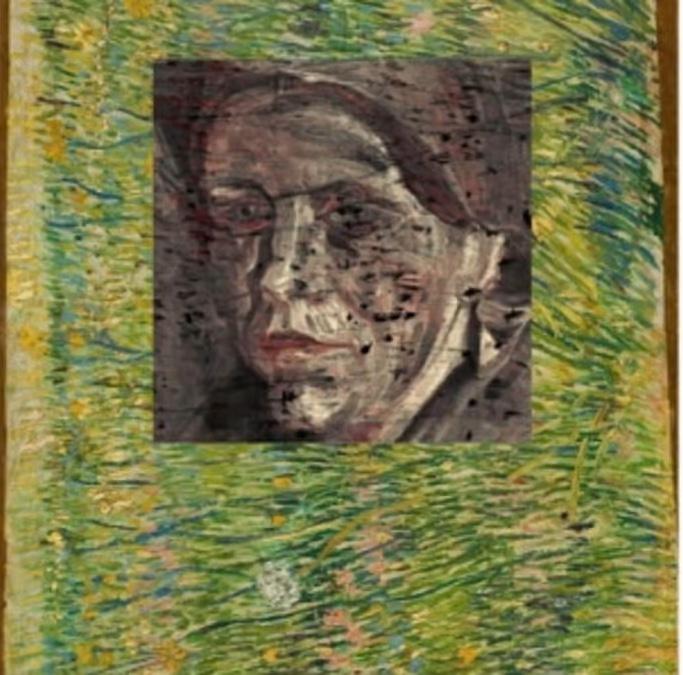

ists have censored their work for centuries. You could ascribe these “touchups” to artistic process (in cases where the original artist altered their own work), or even credit “restoration” artists for making savvy business decisions. But something more is lost in that erasure, or rather, addition. An attempt to change art to reach a wider audience often makes it less interesting. It loses its story, its depth, and ultimately, its original intention.
However, in our bloodsucking, bourgeois, capitalistic society, even art needs to be marketable. Starving artists need to eat too. Though it doesn’t often produce timeless masterpieces, appealing to the masses (and covering up arguably greater works in the process) has been and will likely continue to be a successful strategy for many artists. We can only hope the works with true feeling and intention shine through that second coat of paint.
4 FEB modmuze 75

WITH LOVE, modmuze executive staff



























 Photos by: Loren Rogers
Styling by: Riley Kirkman, asst. Abigail Burnham
Layout by: Bailey Wrightsman
Photos by: Loren Rogers
Styling by: Riley Kirkman, asst. Abigail Burnham
Layout by: Bailey Wrightsman



























 Photos and layout by: Sebastian Arias
Photos and layout by: Sebastian Arias







 By Kennedy Skaggs
Photos by: Loren Rodgers
By Kennedy Skaggs
Photos by: Loren Rodgers




 Jaycee Hampton
Jaycee Hampton




 by Cooper Carr
by Cooper Carr


 Photos by:Rodney Ashaba
Styled by: Catie Barrett, asst. Meredith Mountford
Layout: Hadley Waldren
Photos by:Rodney Ashaba
Styled by: Catie Barrett, asst. Meredith Mountford
Layout: Hadley Waldren








 Lillian Cordes
Lillian Cordes



















 Photos by: Loren Rogers
Styled by: Audrey Flood, asst. Sarah
Evan Mitchell
Layout by: Hadley Waldren
Photos by: Loren Rogers
Styled by: Audrey Flood, asst. Sarah
Evan Mitchell
Layout by: Hadley Waldren






 Photos by: Loren Rodgers Styling by: Johanna Gonzalez, asst. Sebastian Arias
Photos by: Loren Rodgers Styling by: Johanna Gonzalez, asst. Sebastian Arias











 by:
Ashaba & Loren Rogers
by:
Ashaba & Loren Rogers


 by Kamryn Chapman
by Kamryn Chapman



 Photos by:Toni Purnell
Styled by: Abigail Burnham, asst. Jordan Reimer
Layout by: Sophia Rodriguez
Photos by:Toni Purnell
Styled by: Abigail Burnham, asst. Jordan Reimer
Layout by: Sophia Rodriguez






